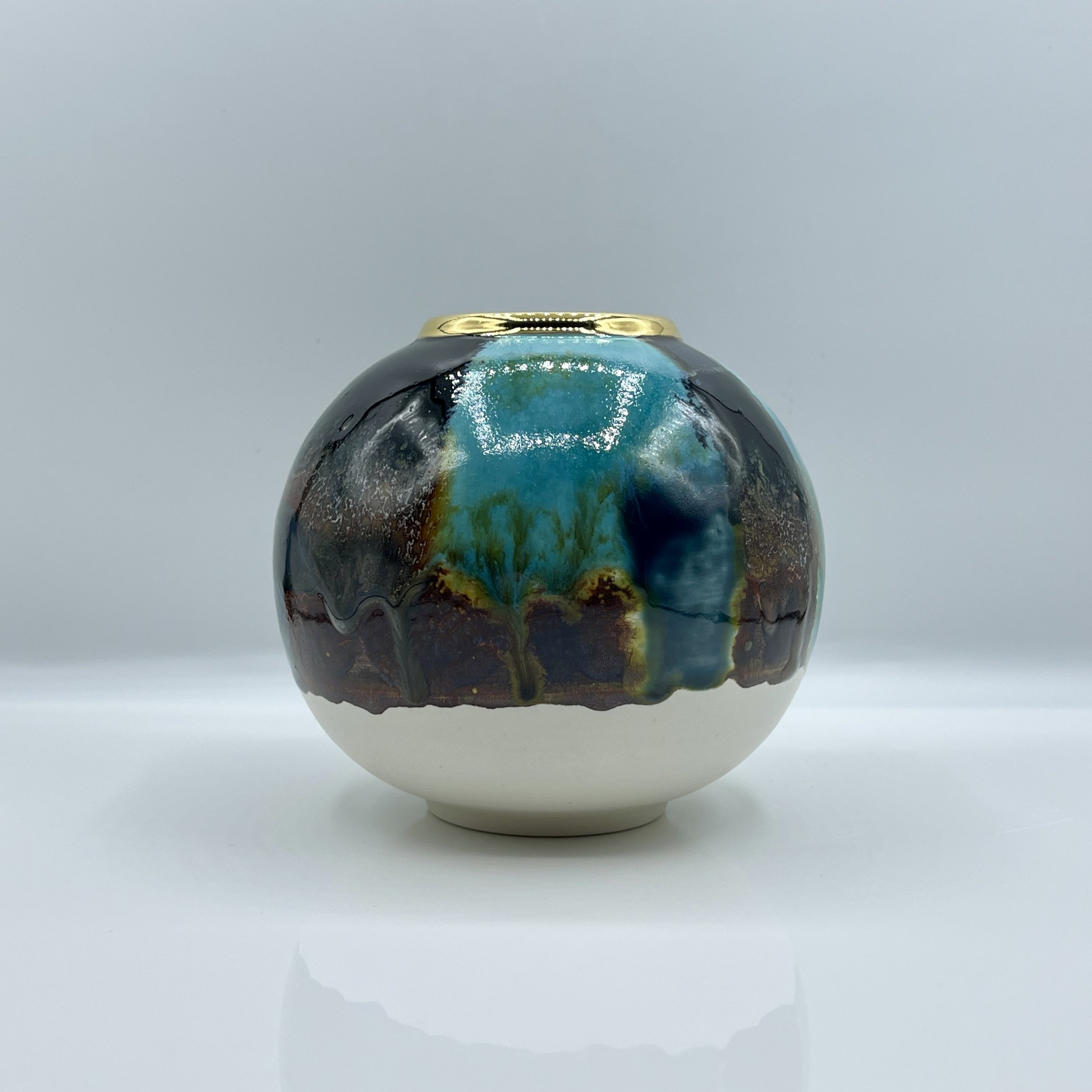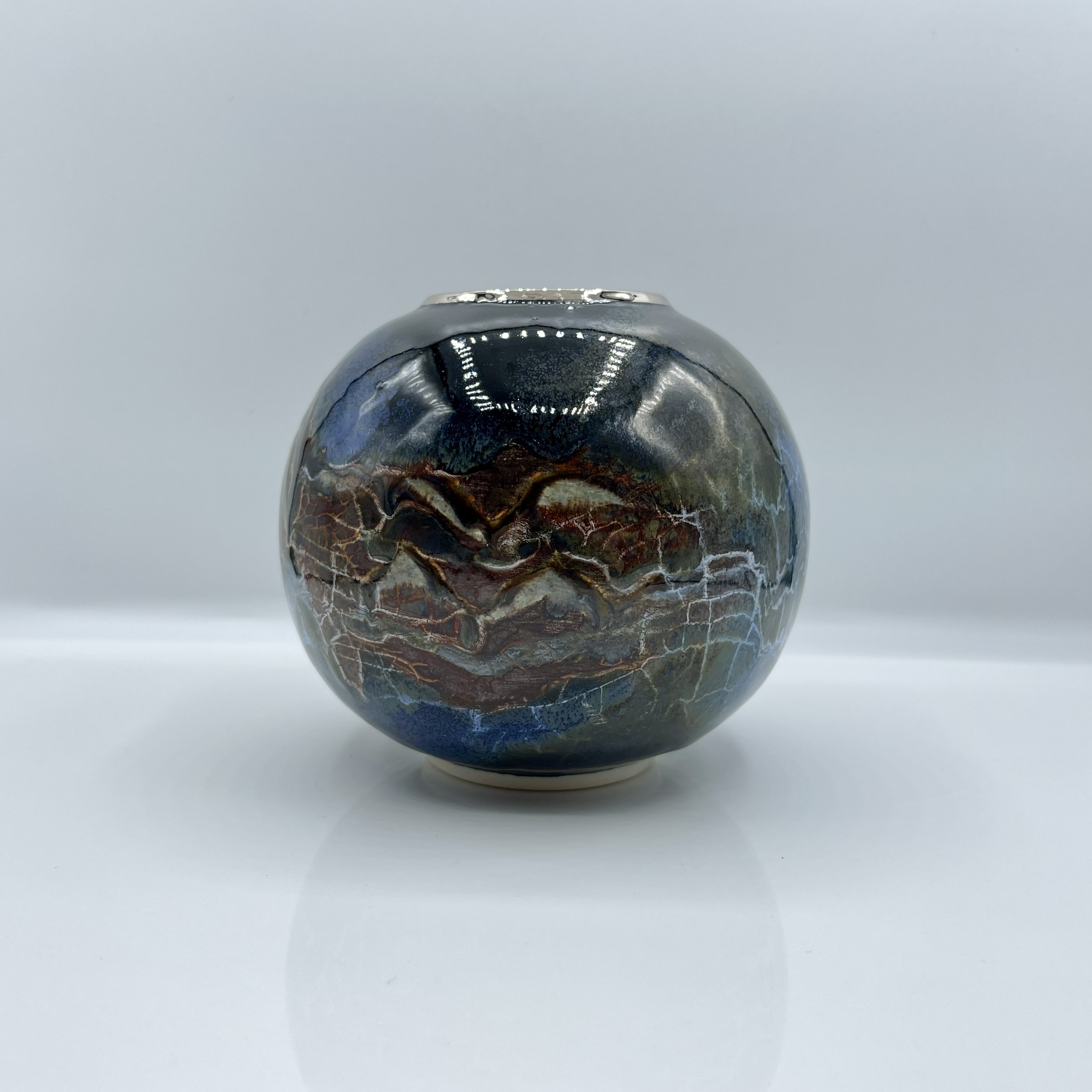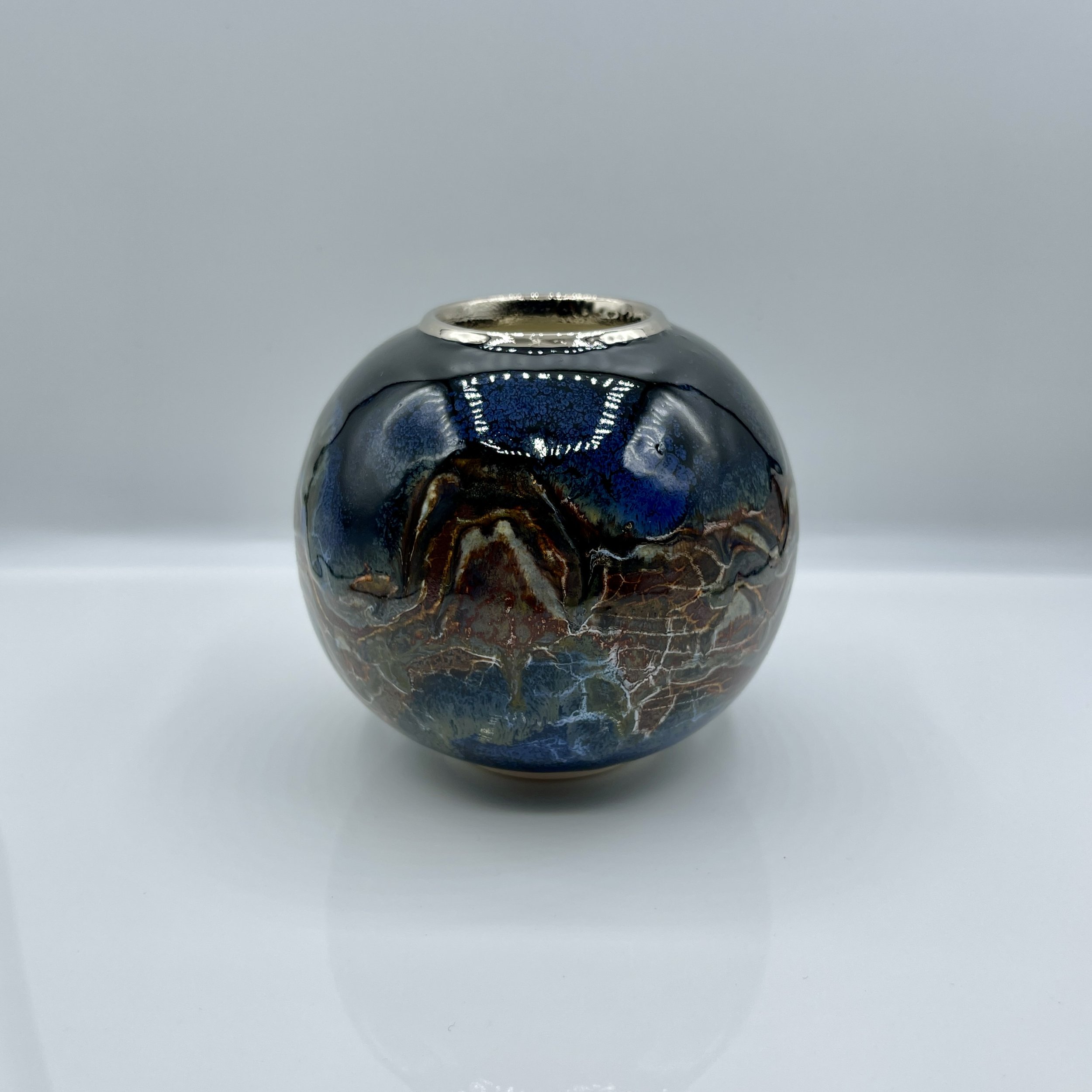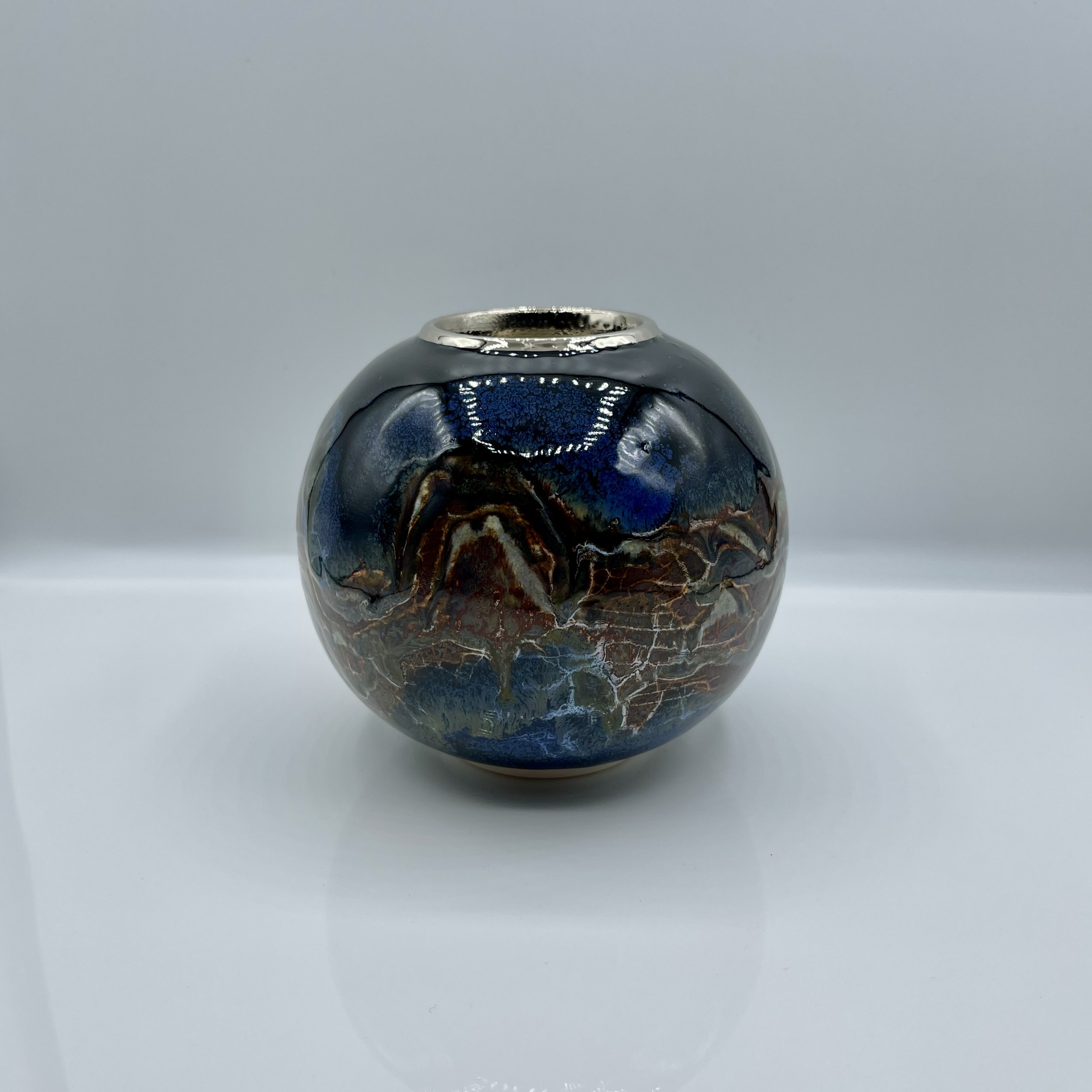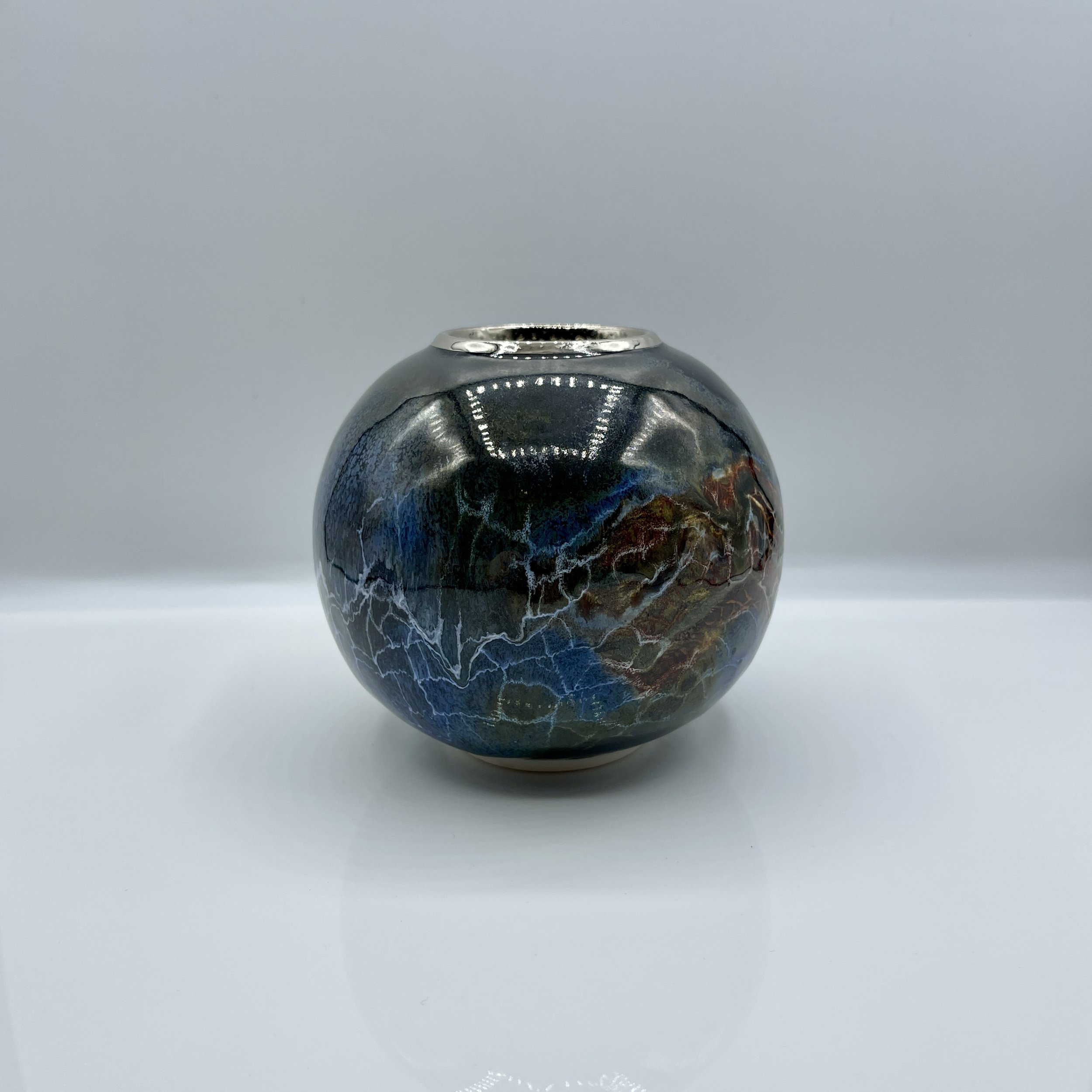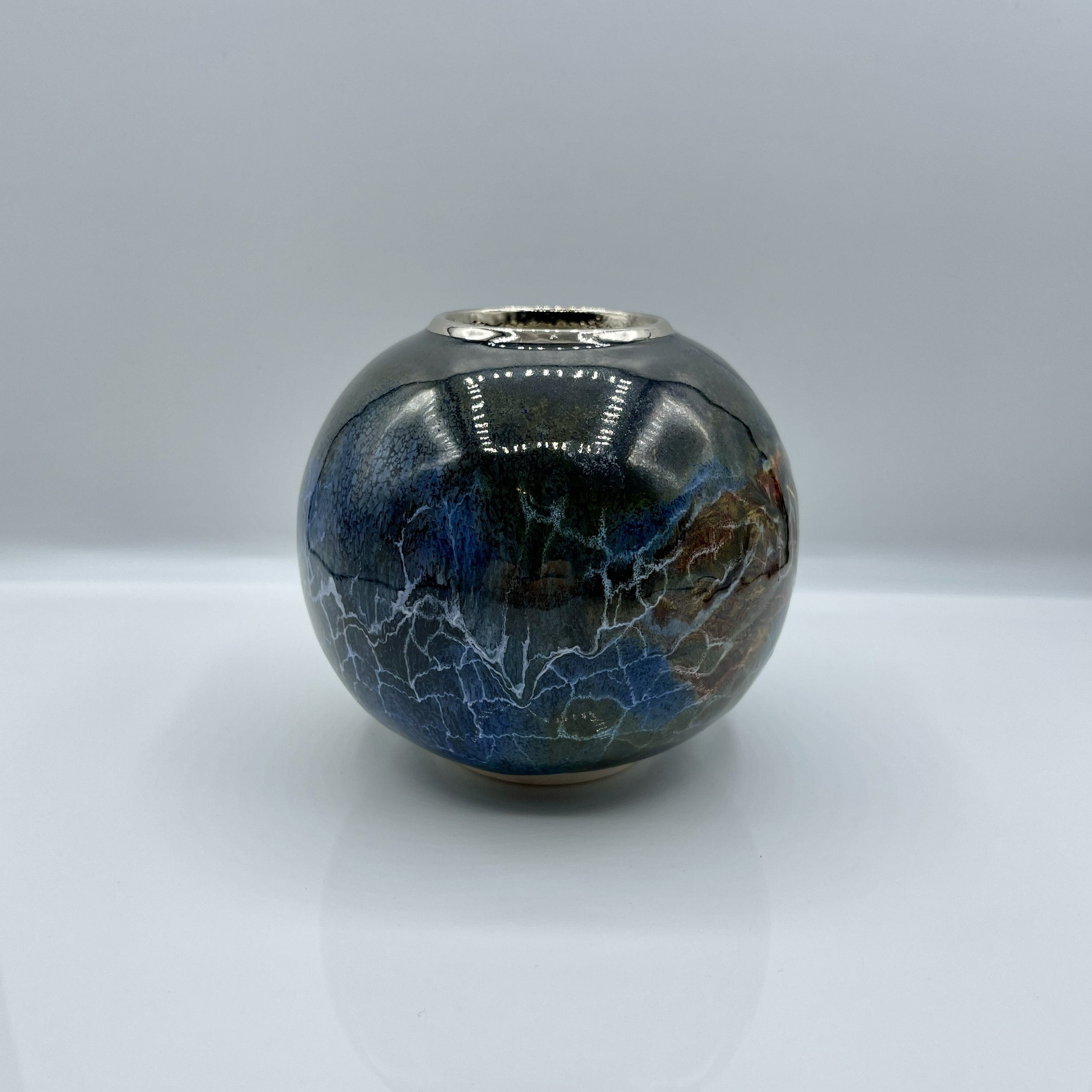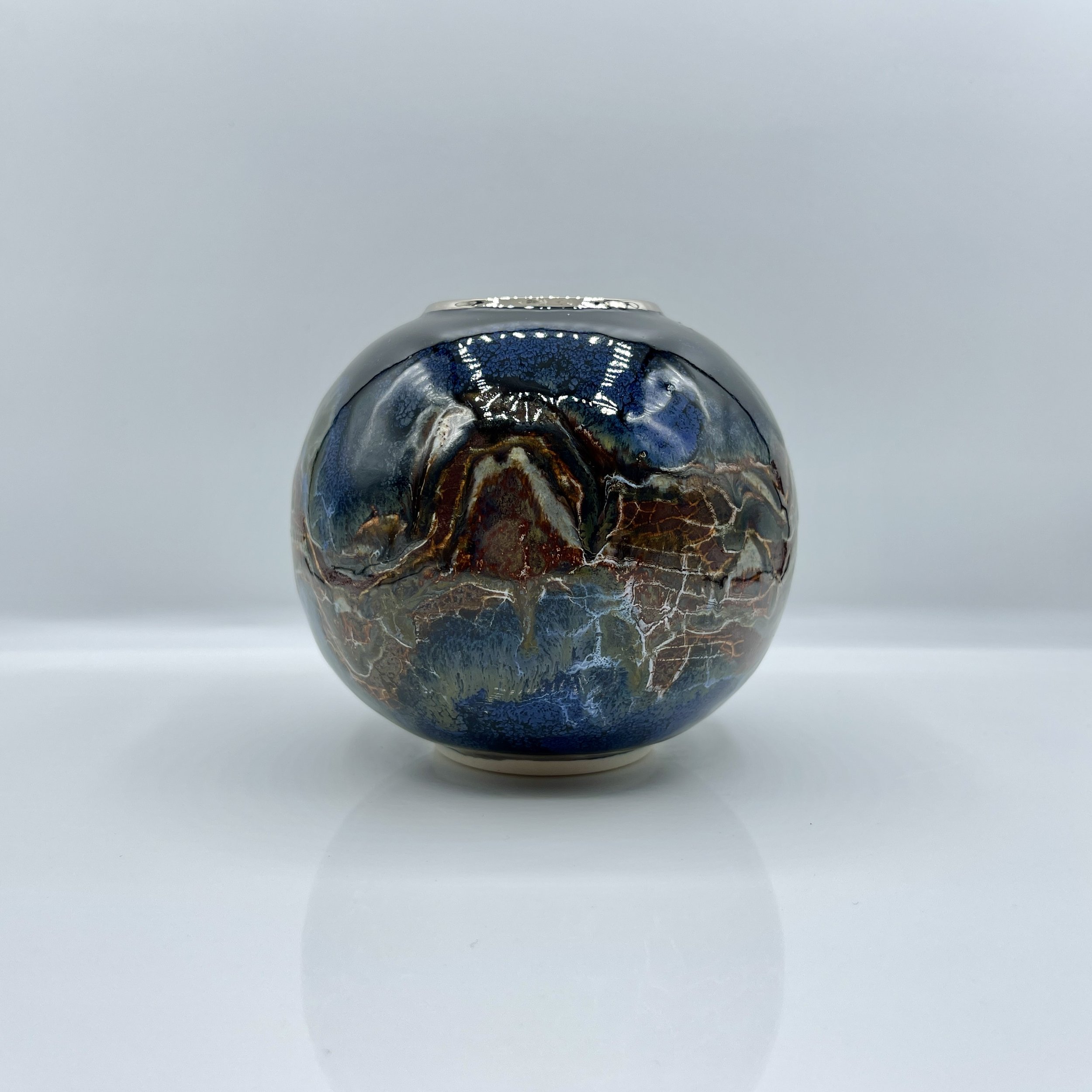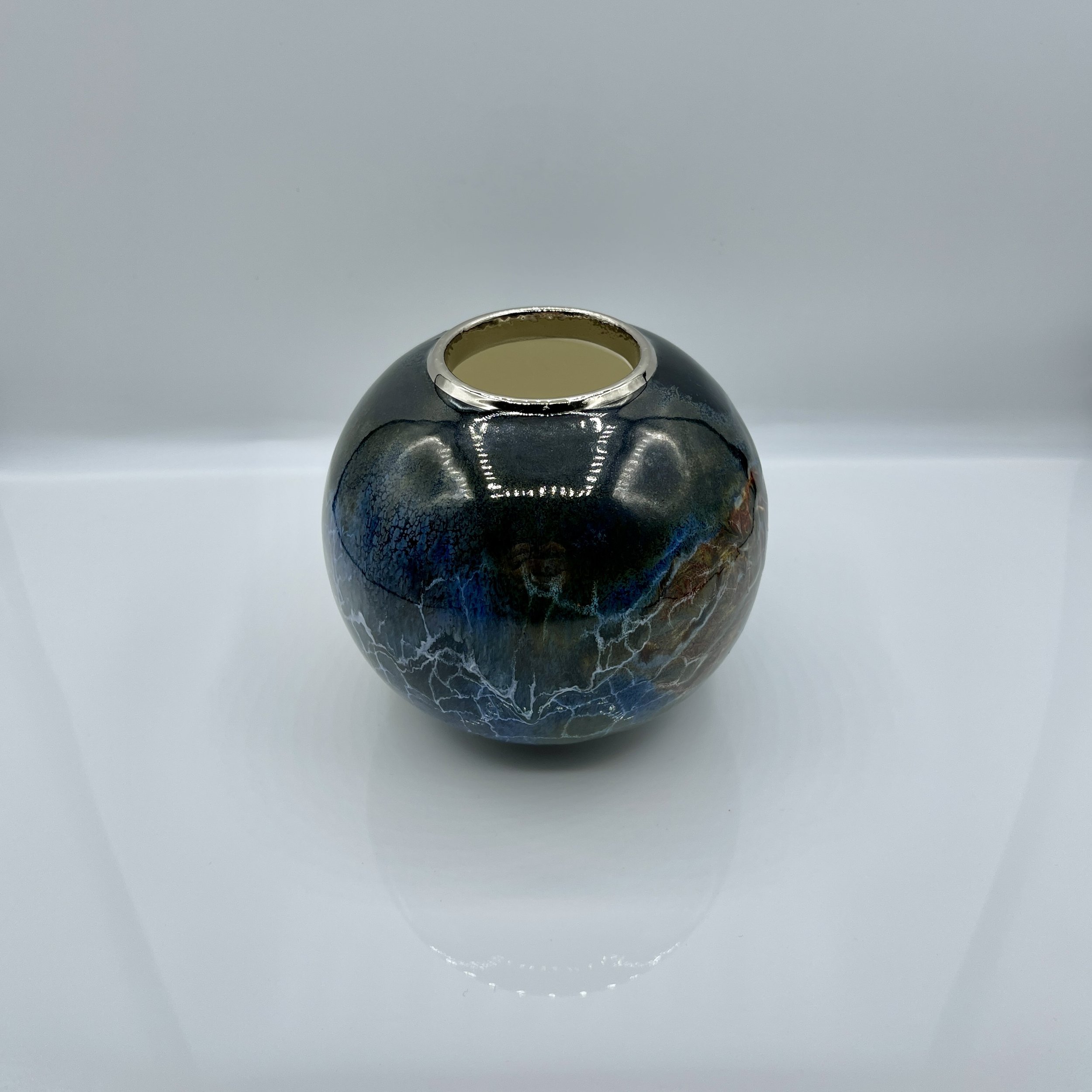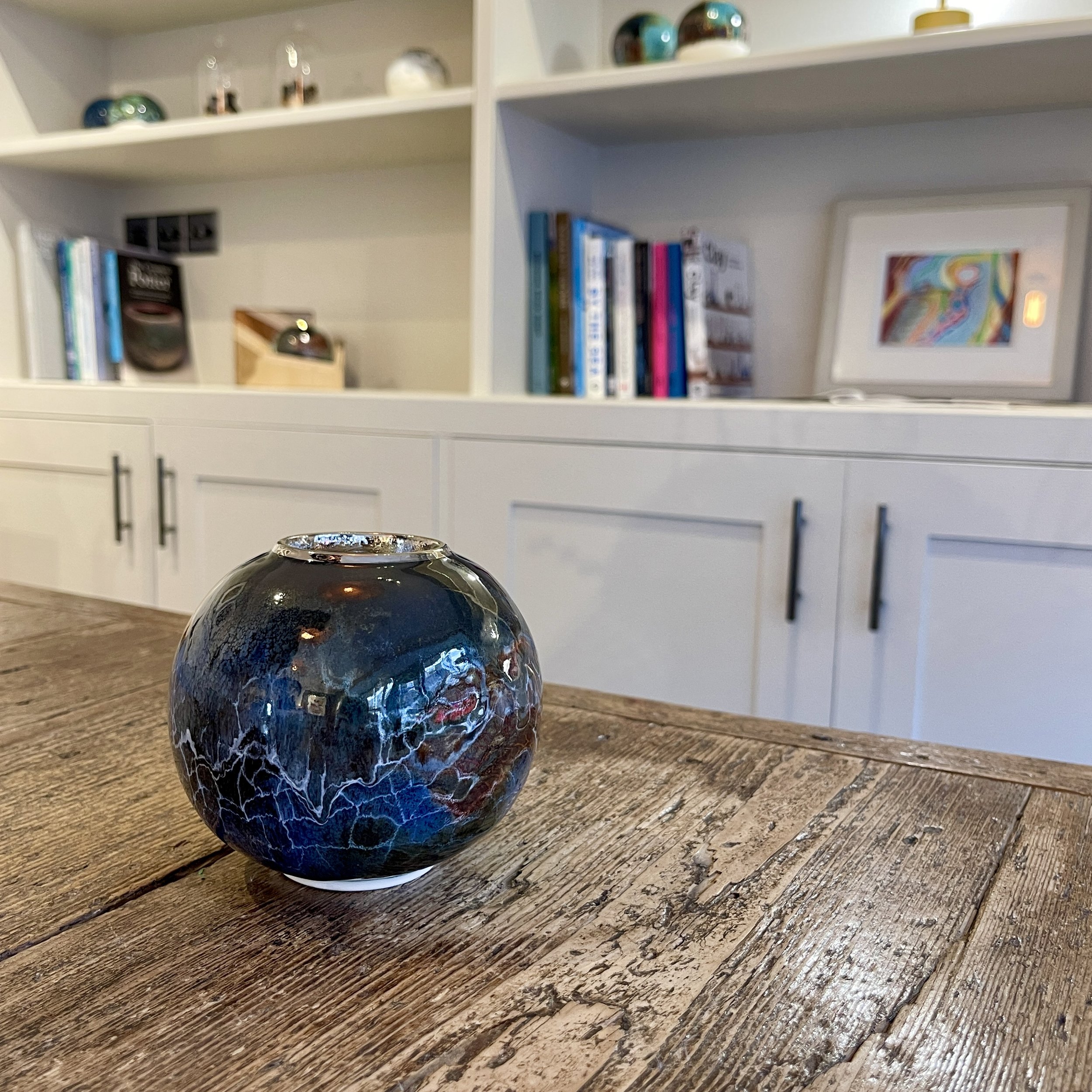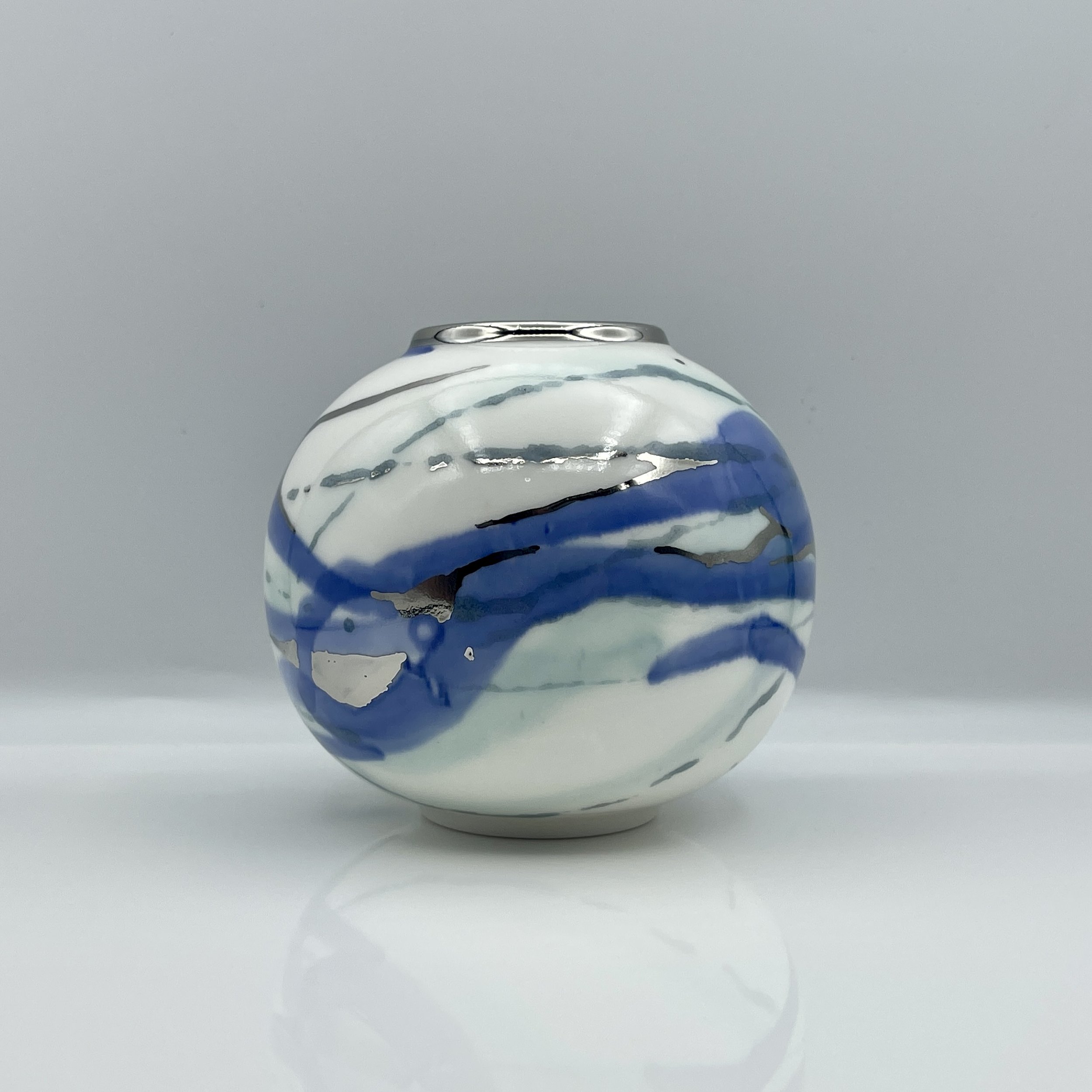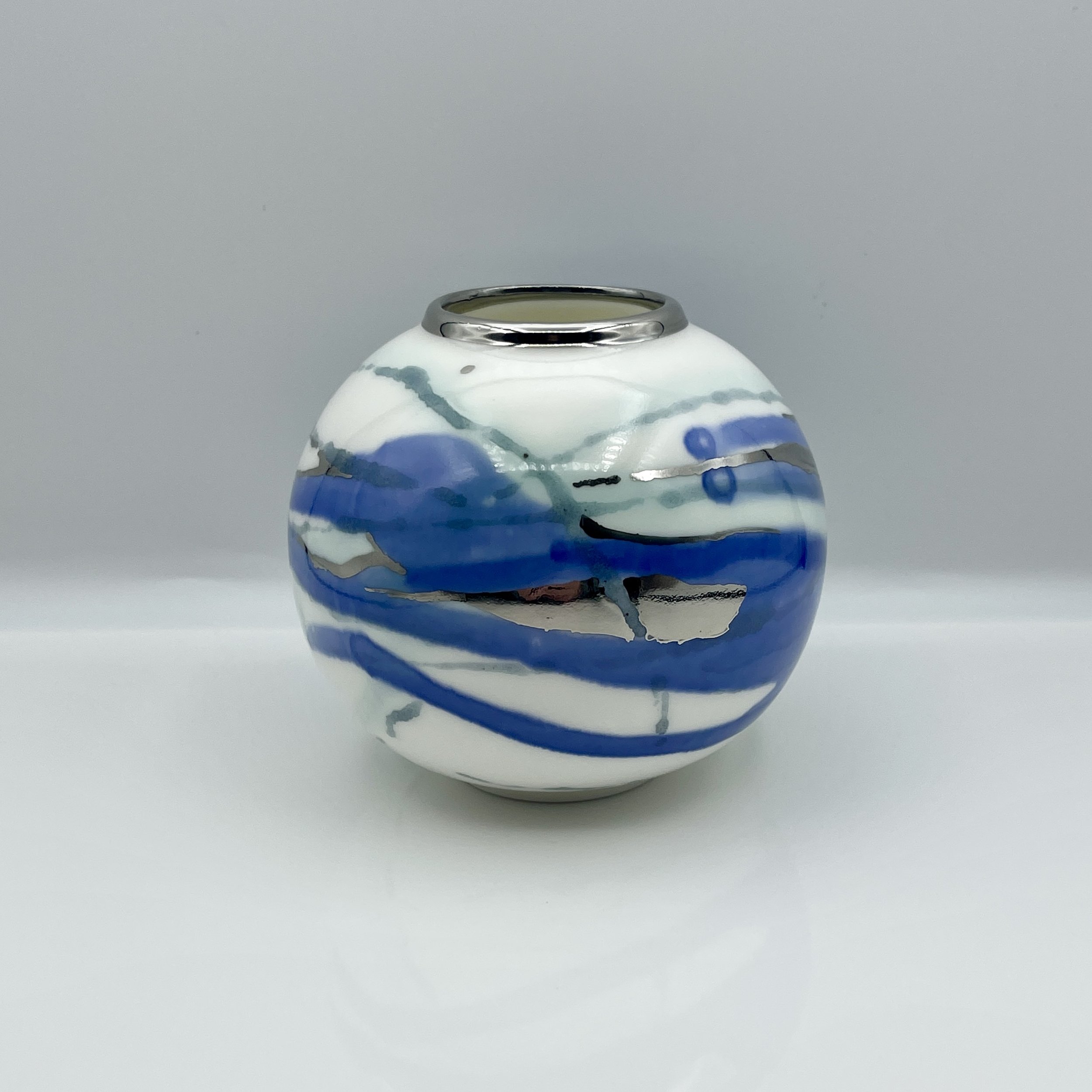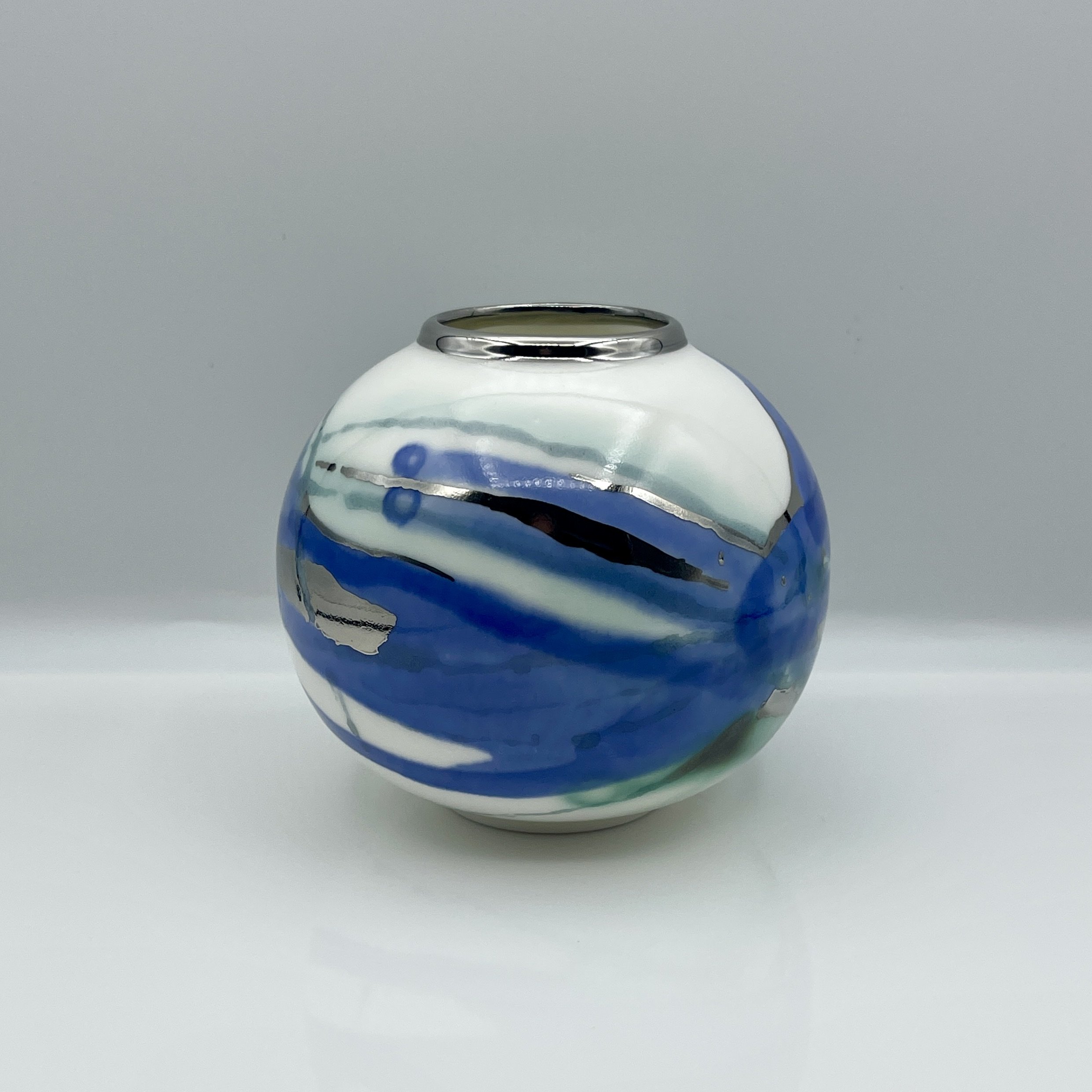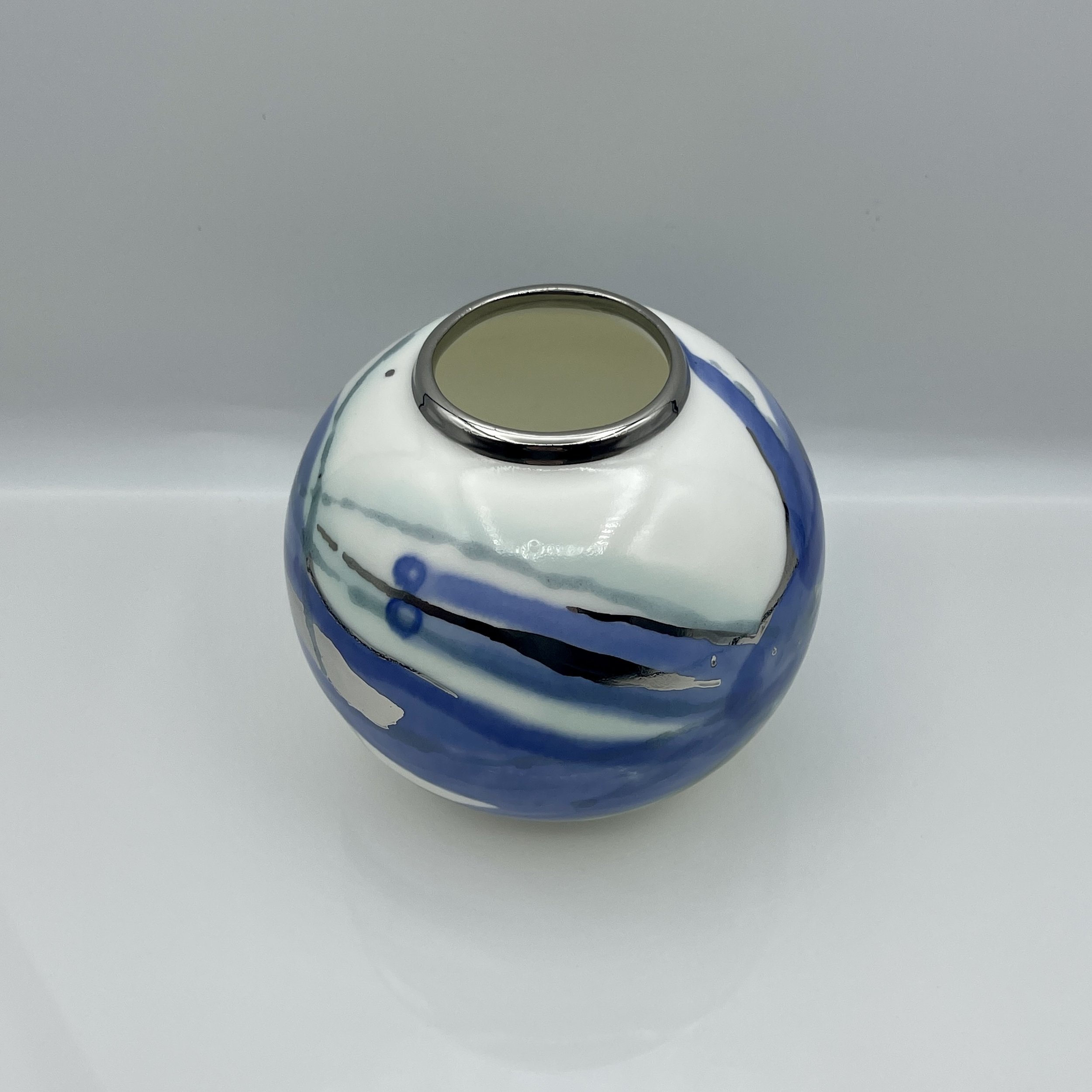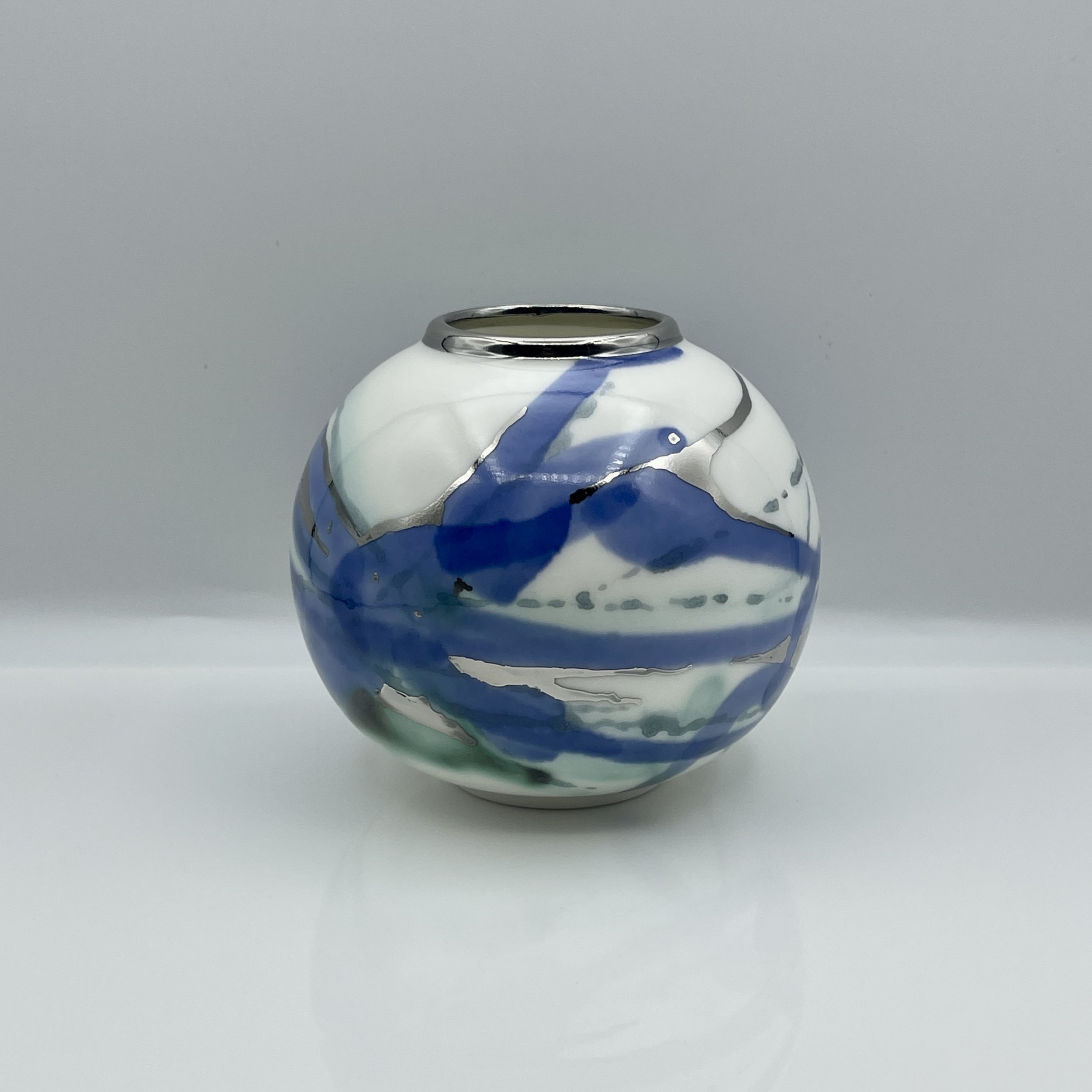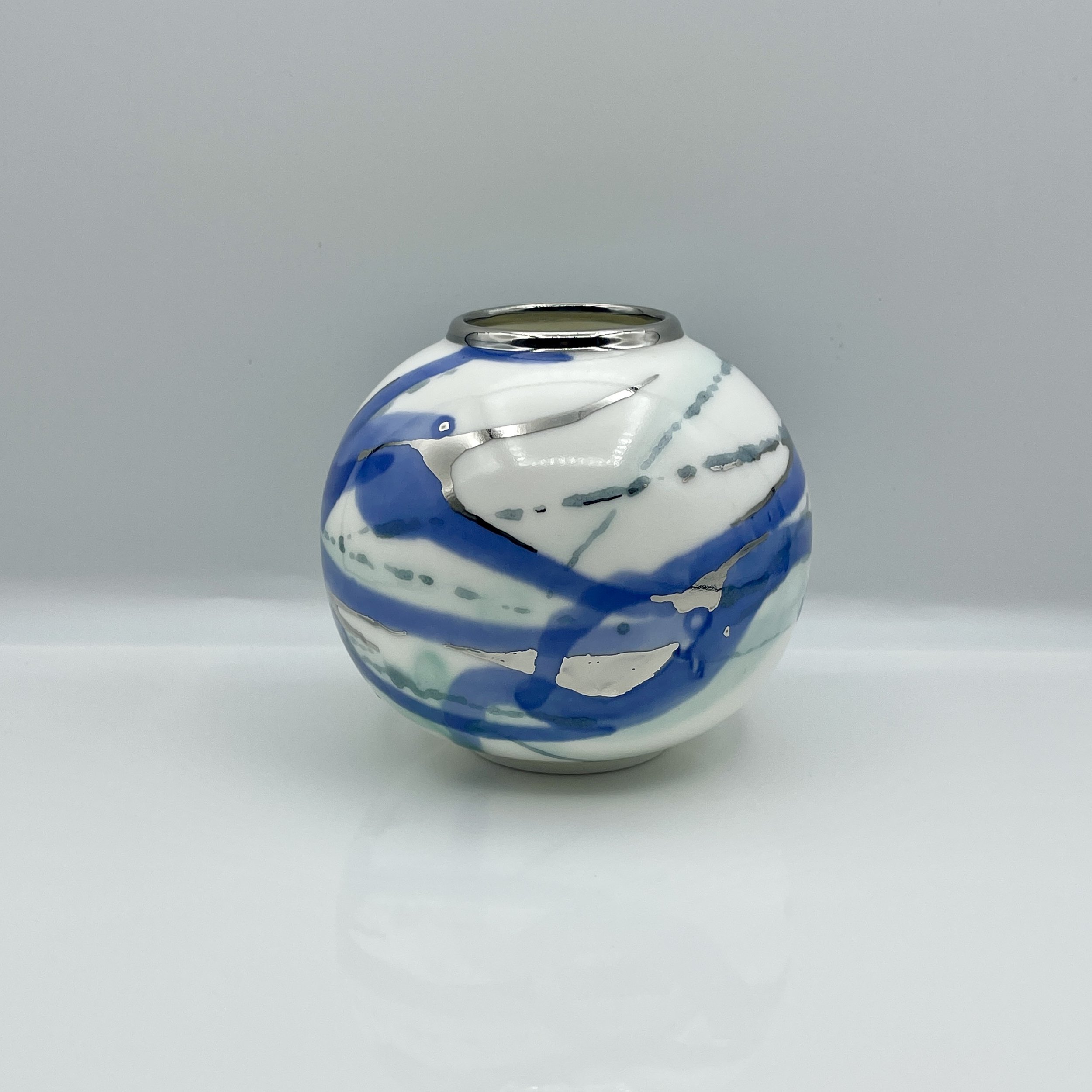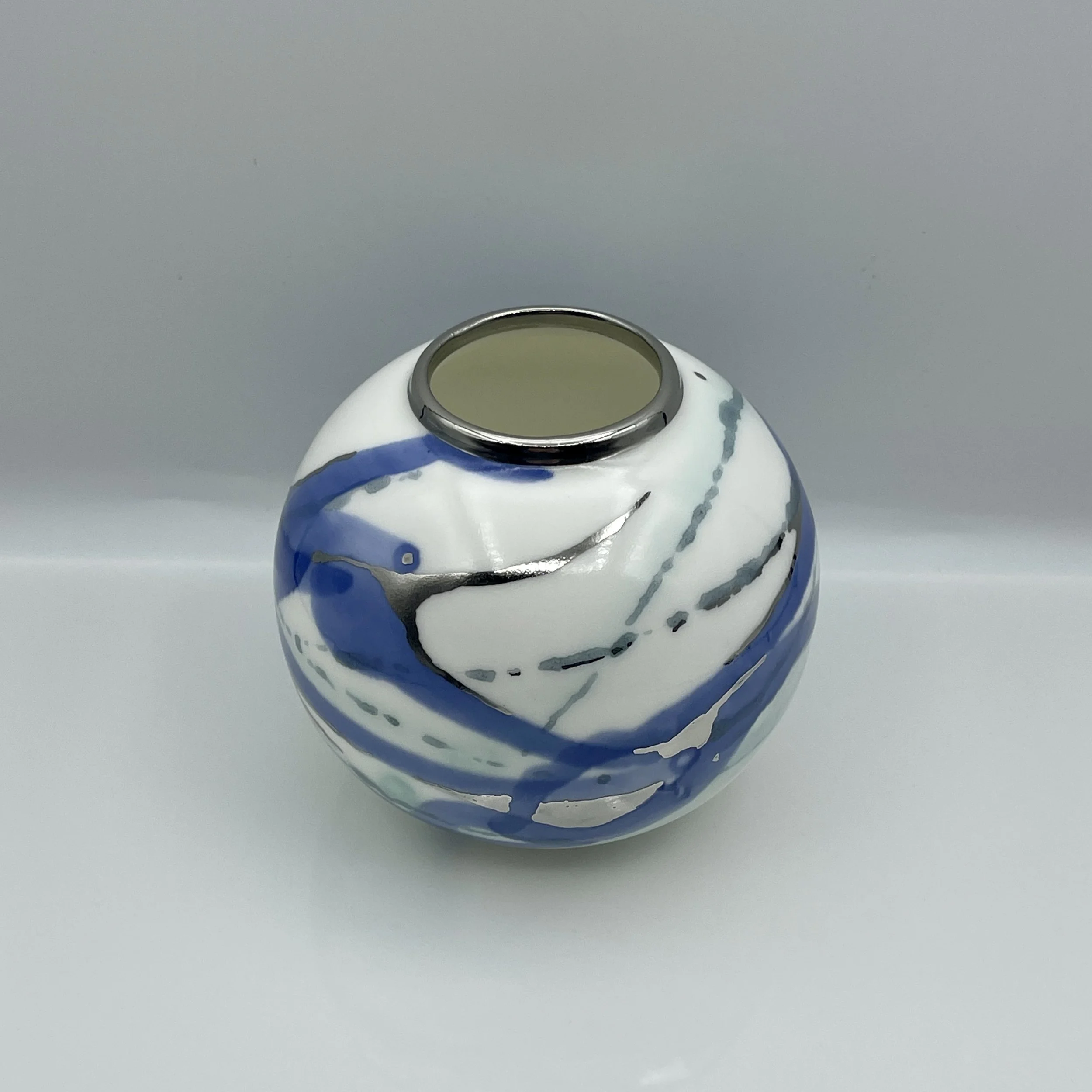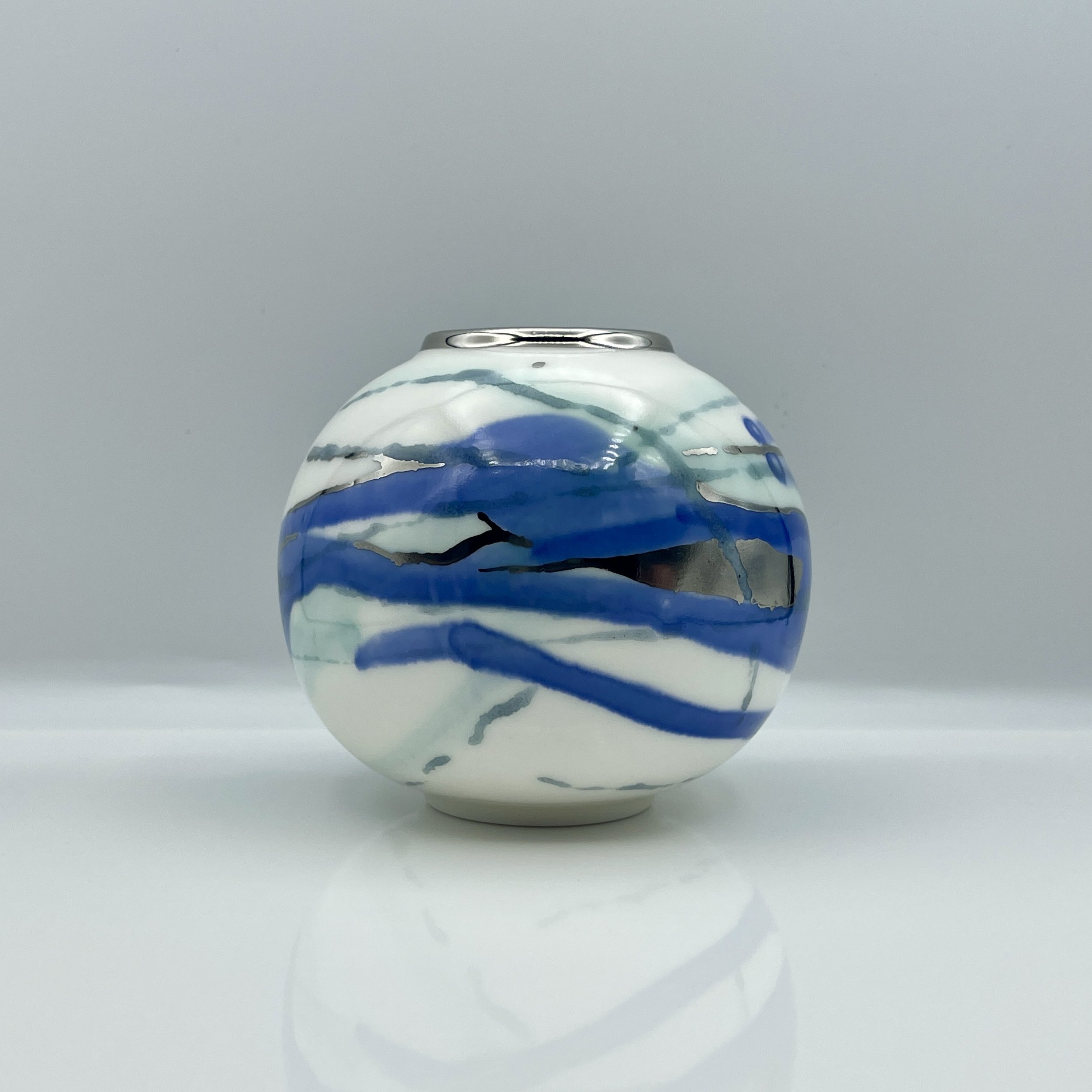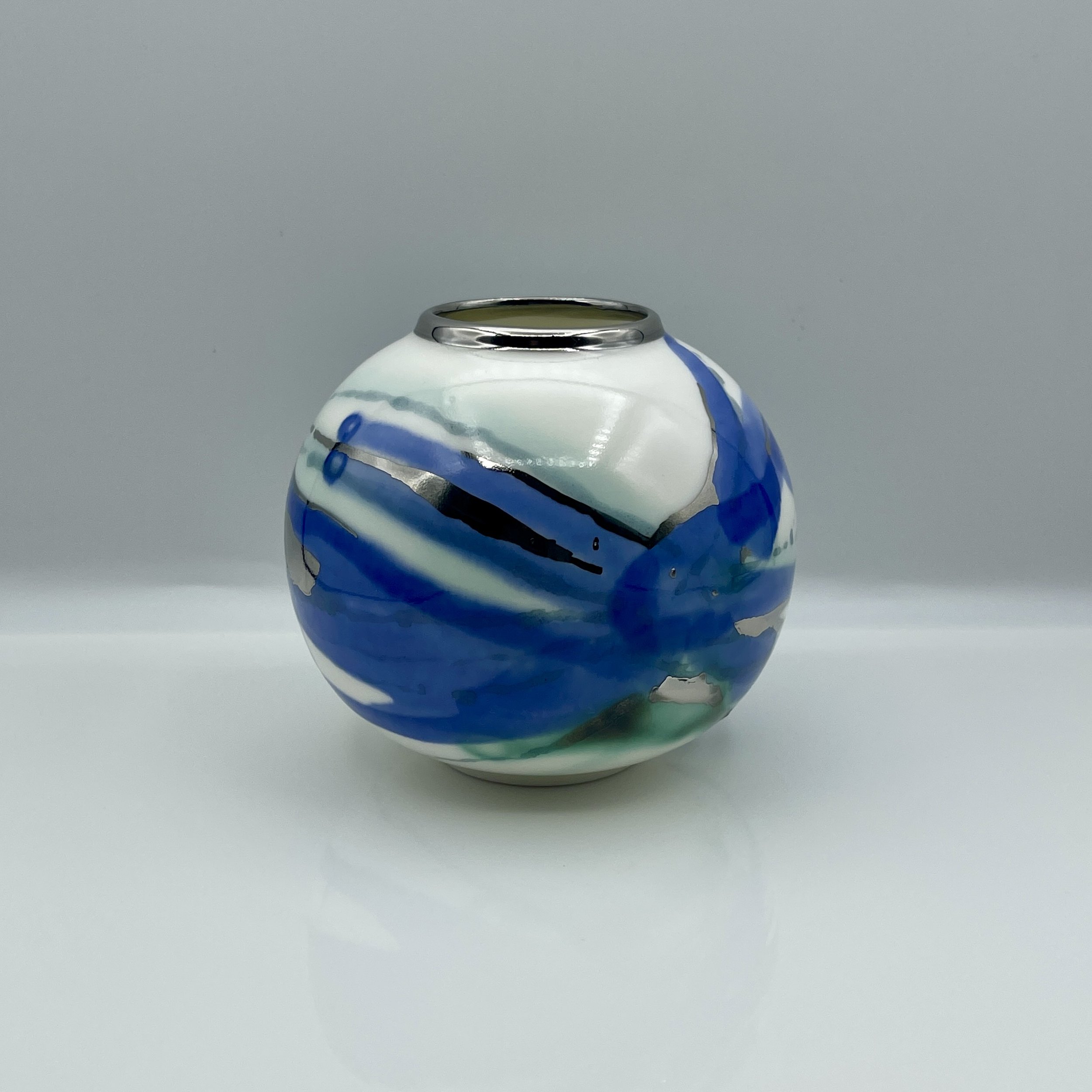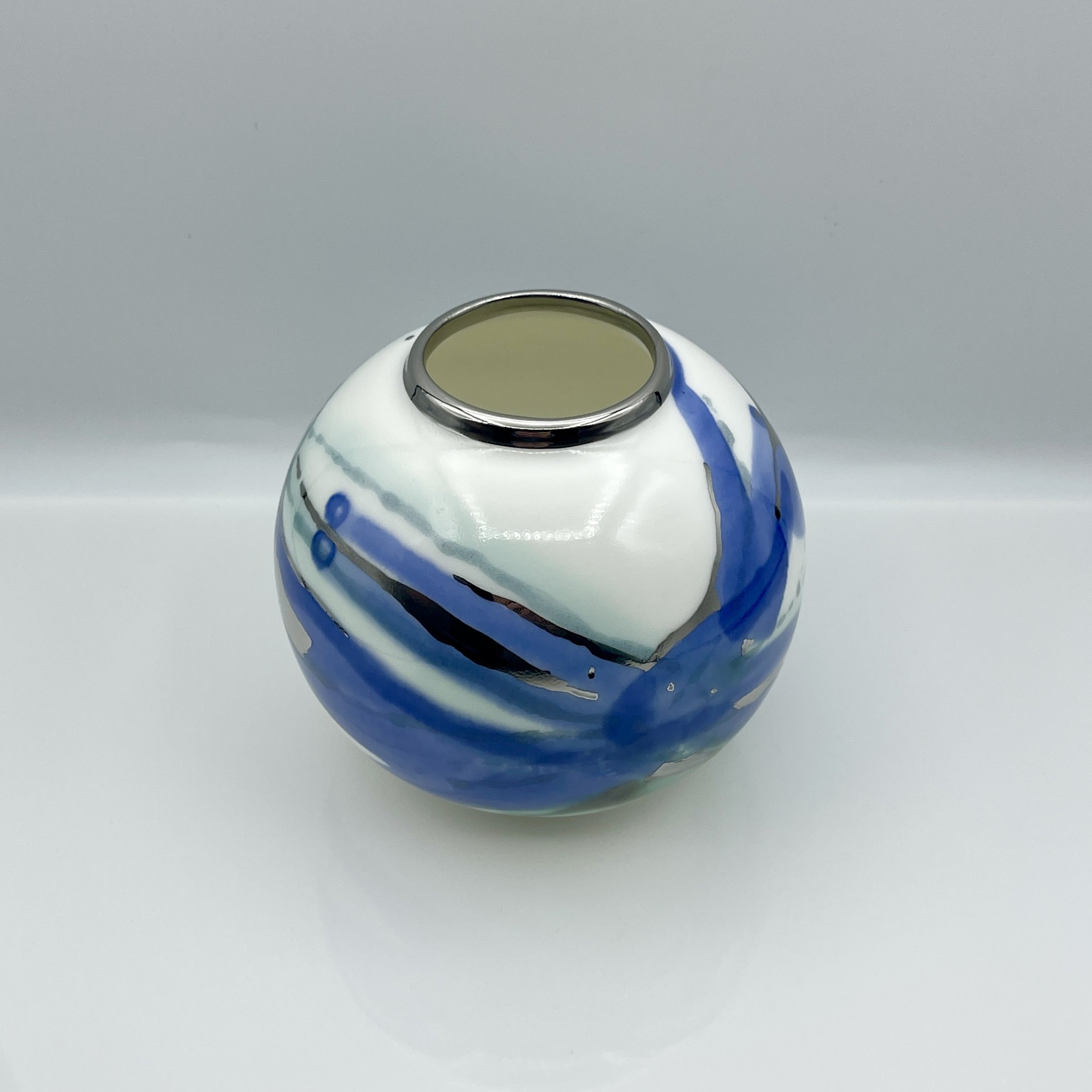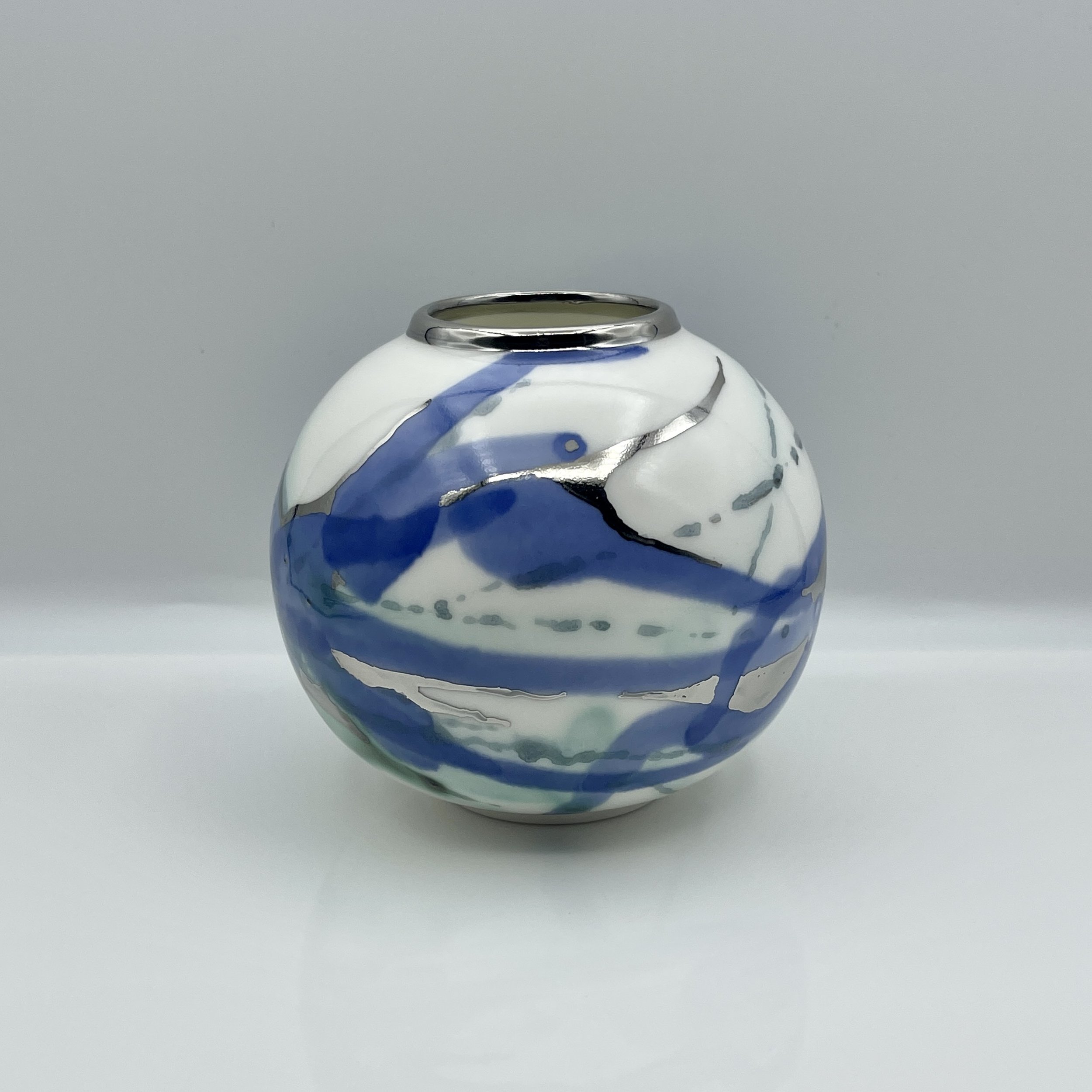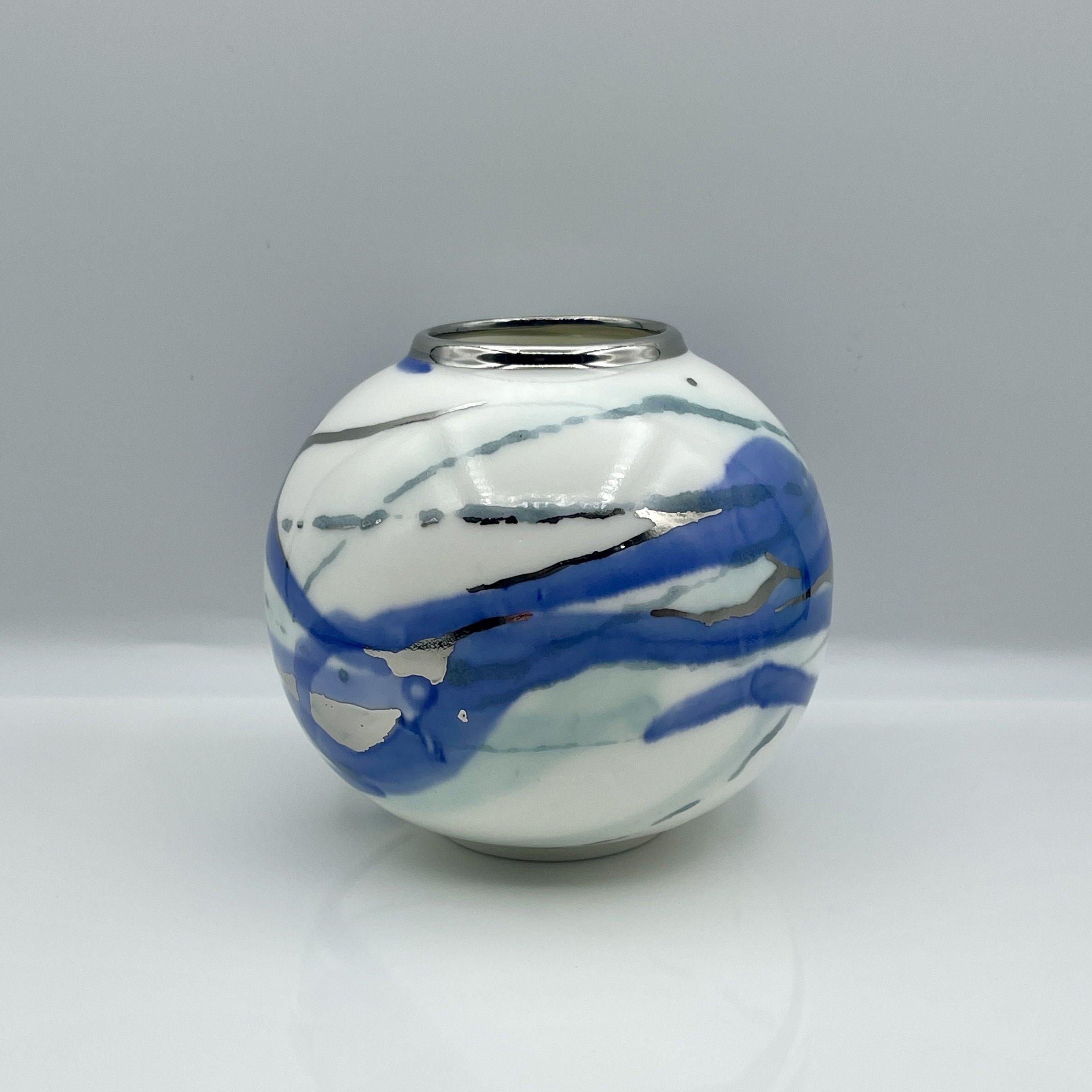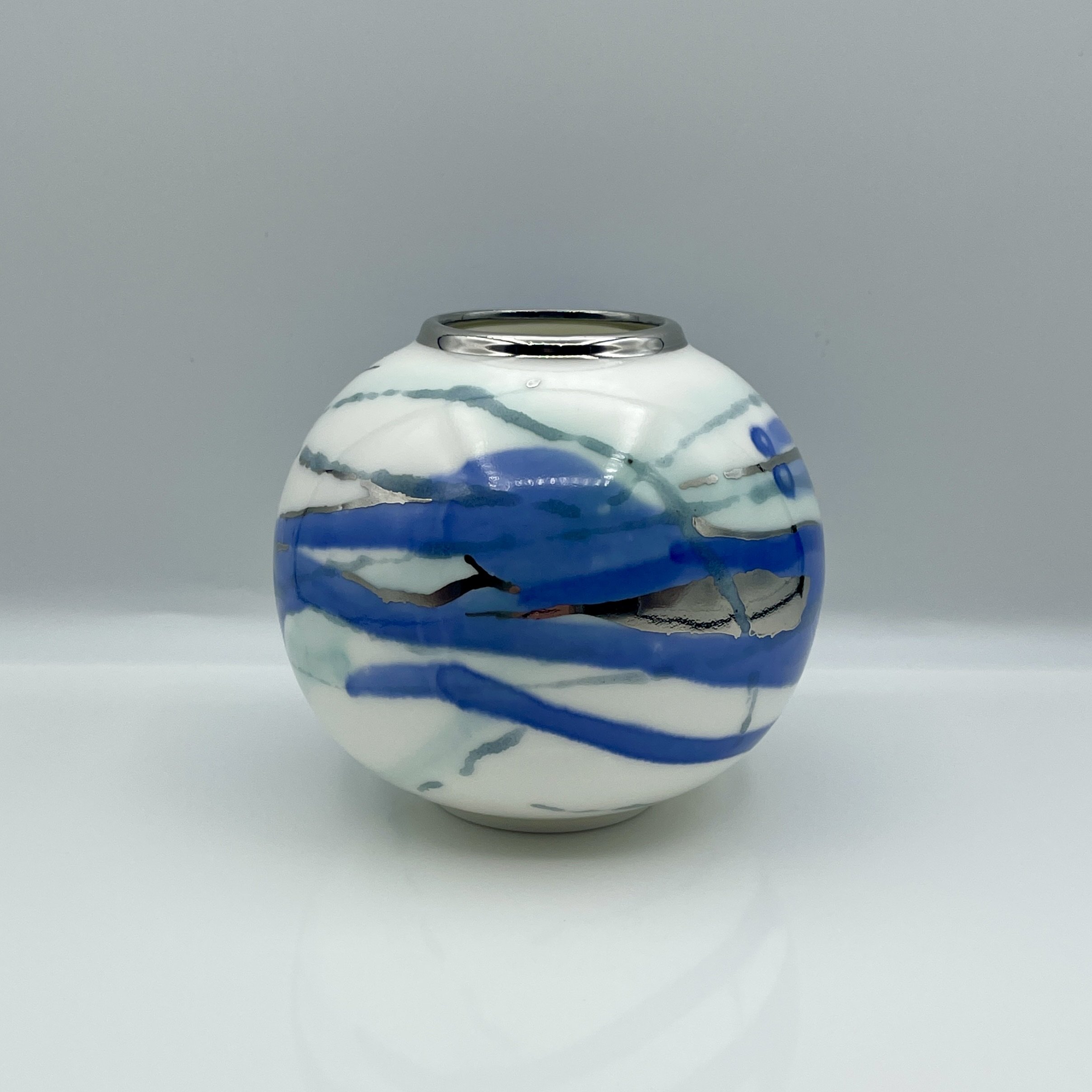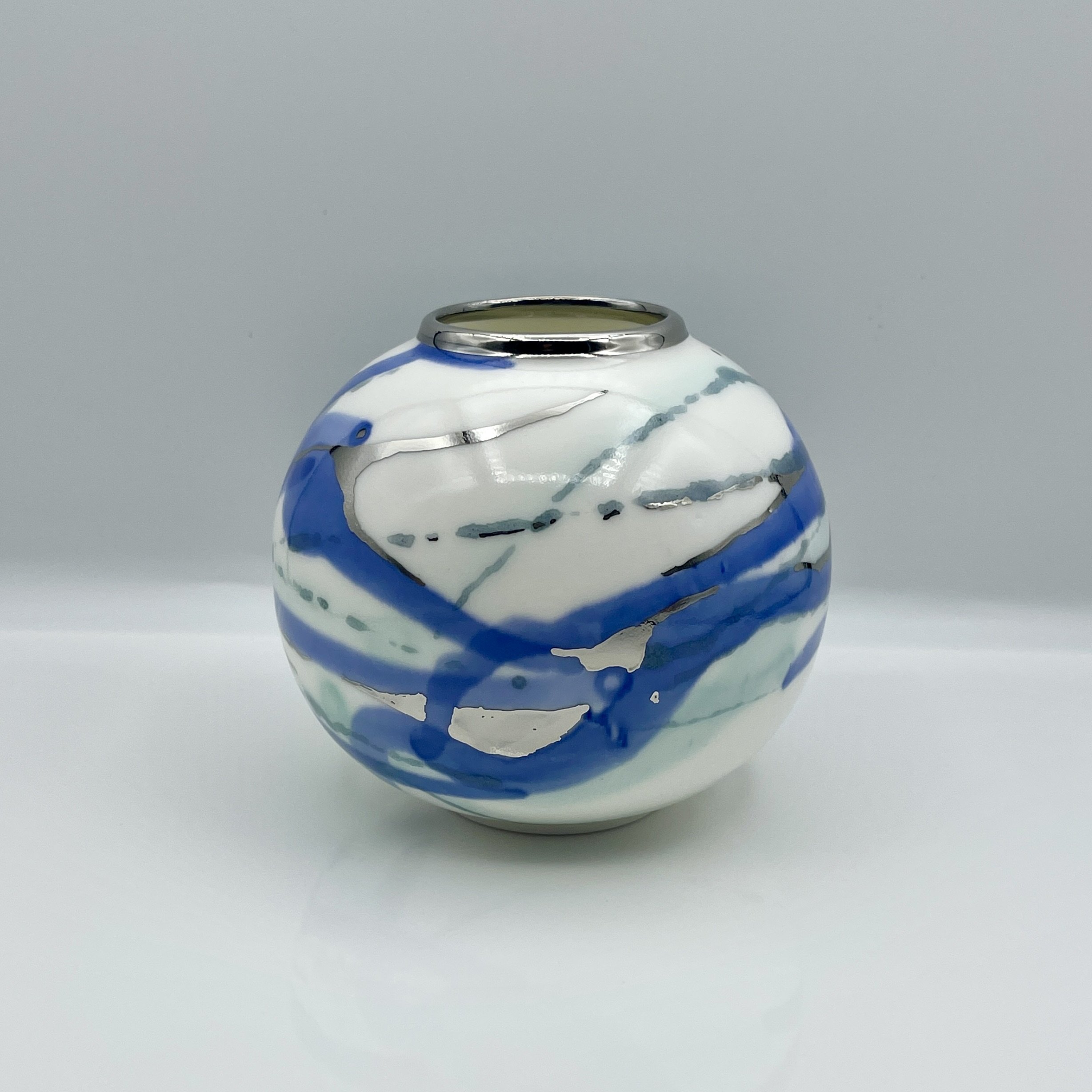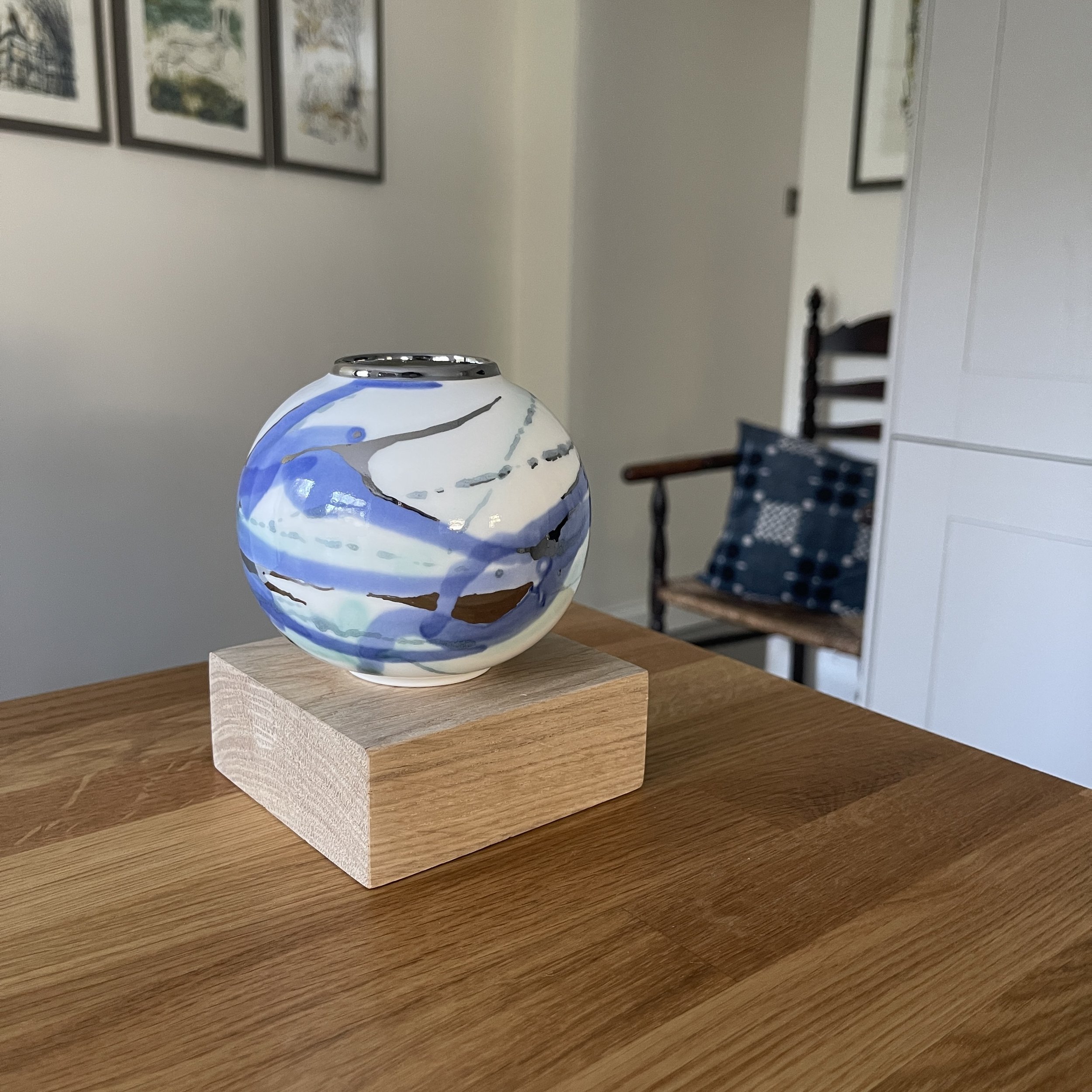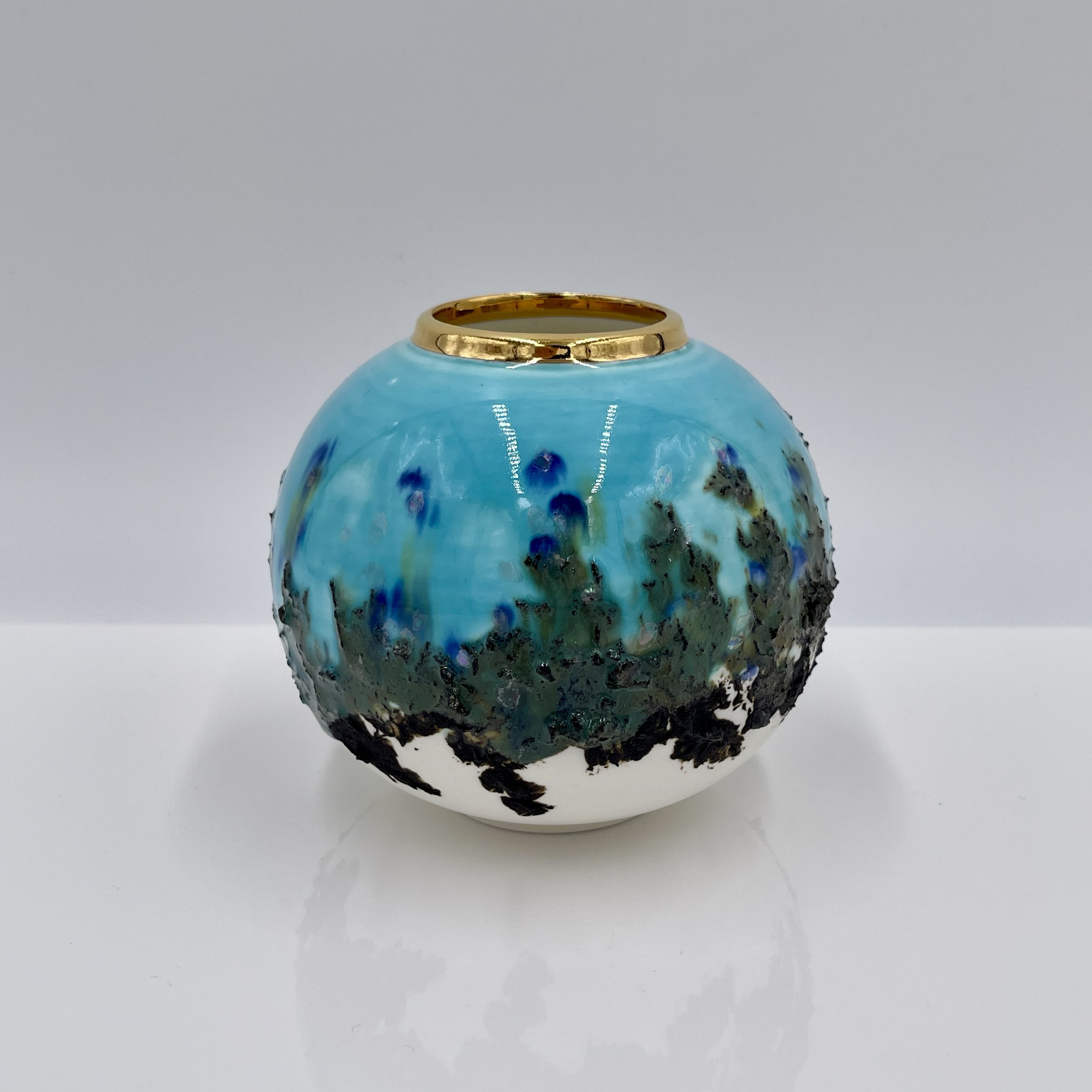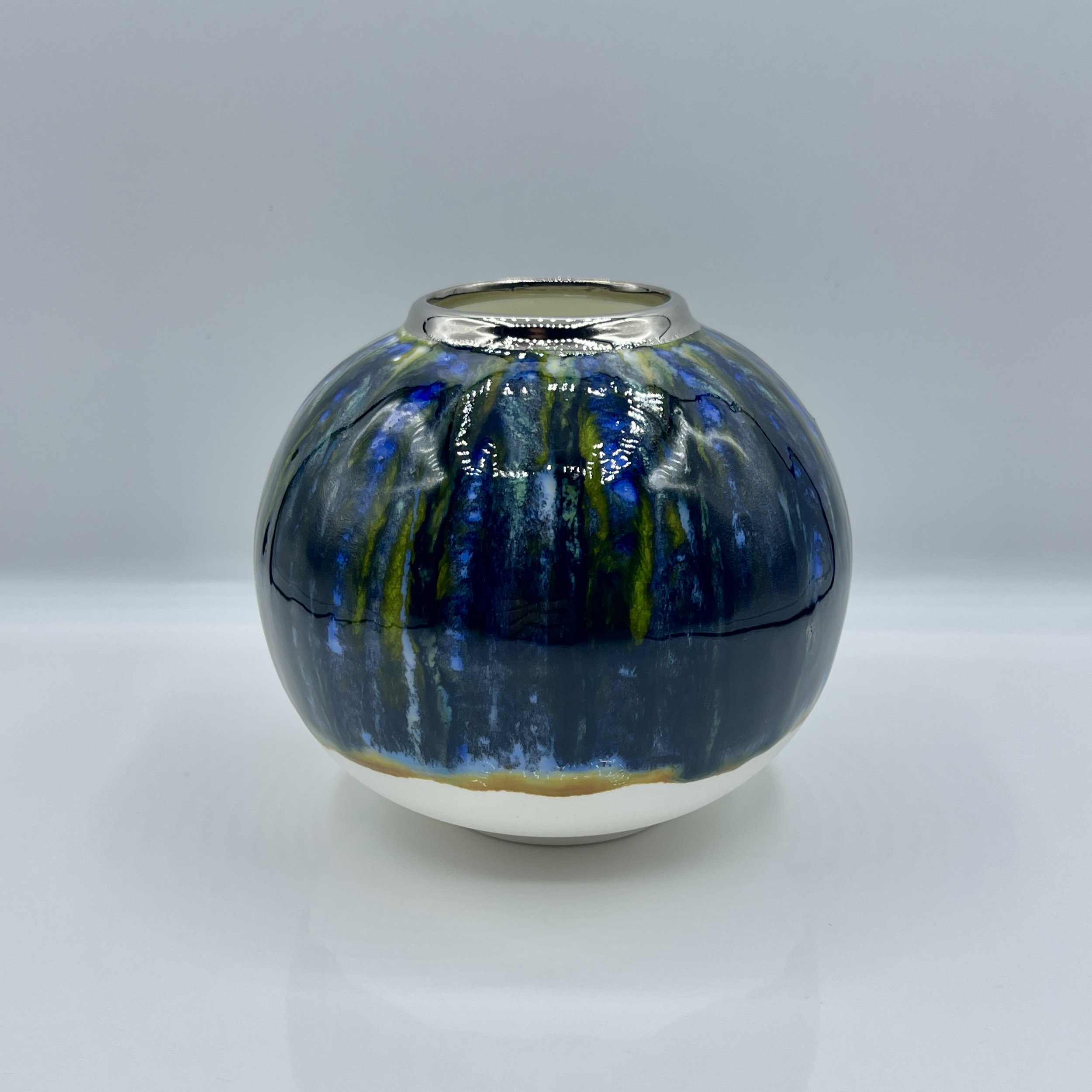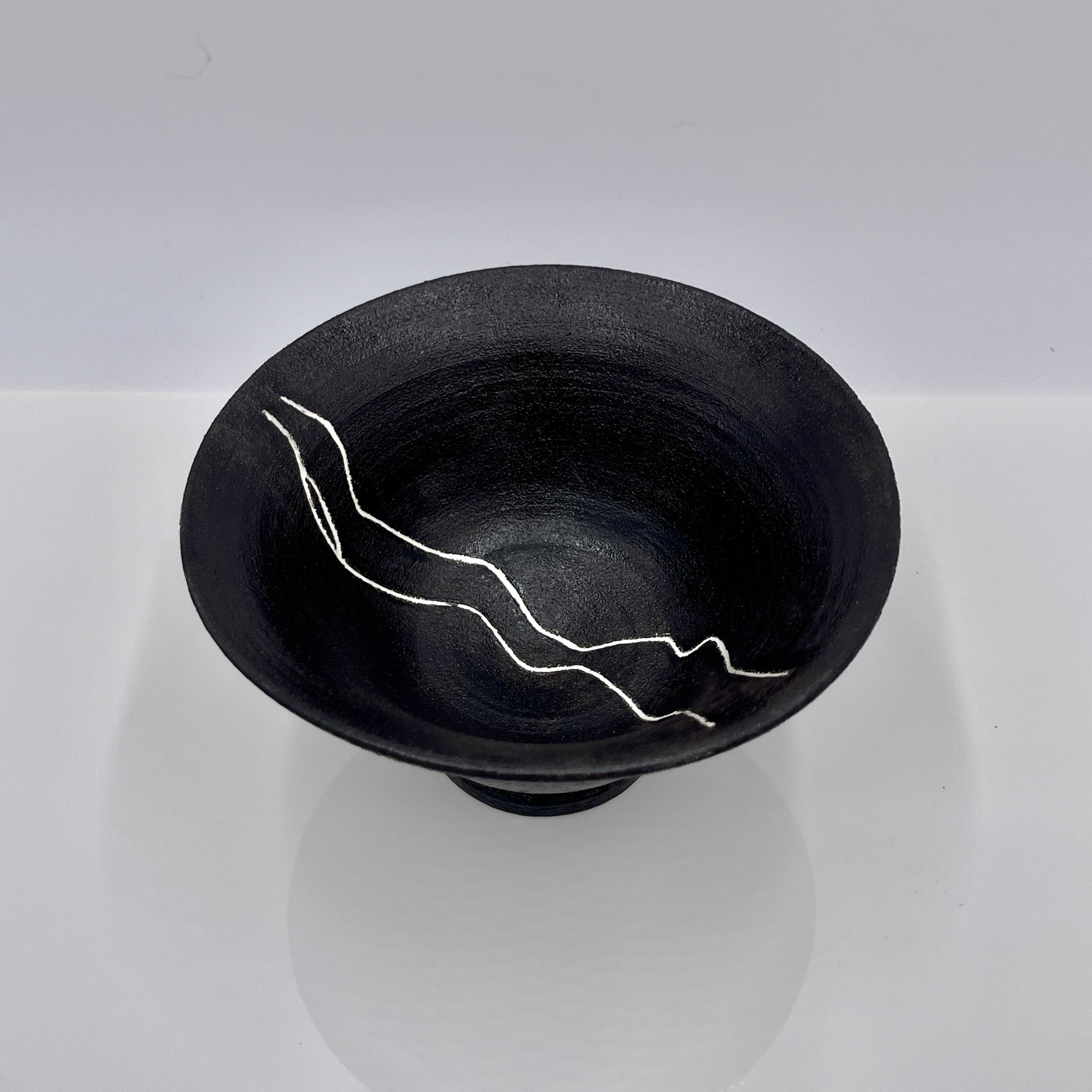 Image 1 of 5
Image 1 of 5

 Image 2 of 5
Image 2 of 5

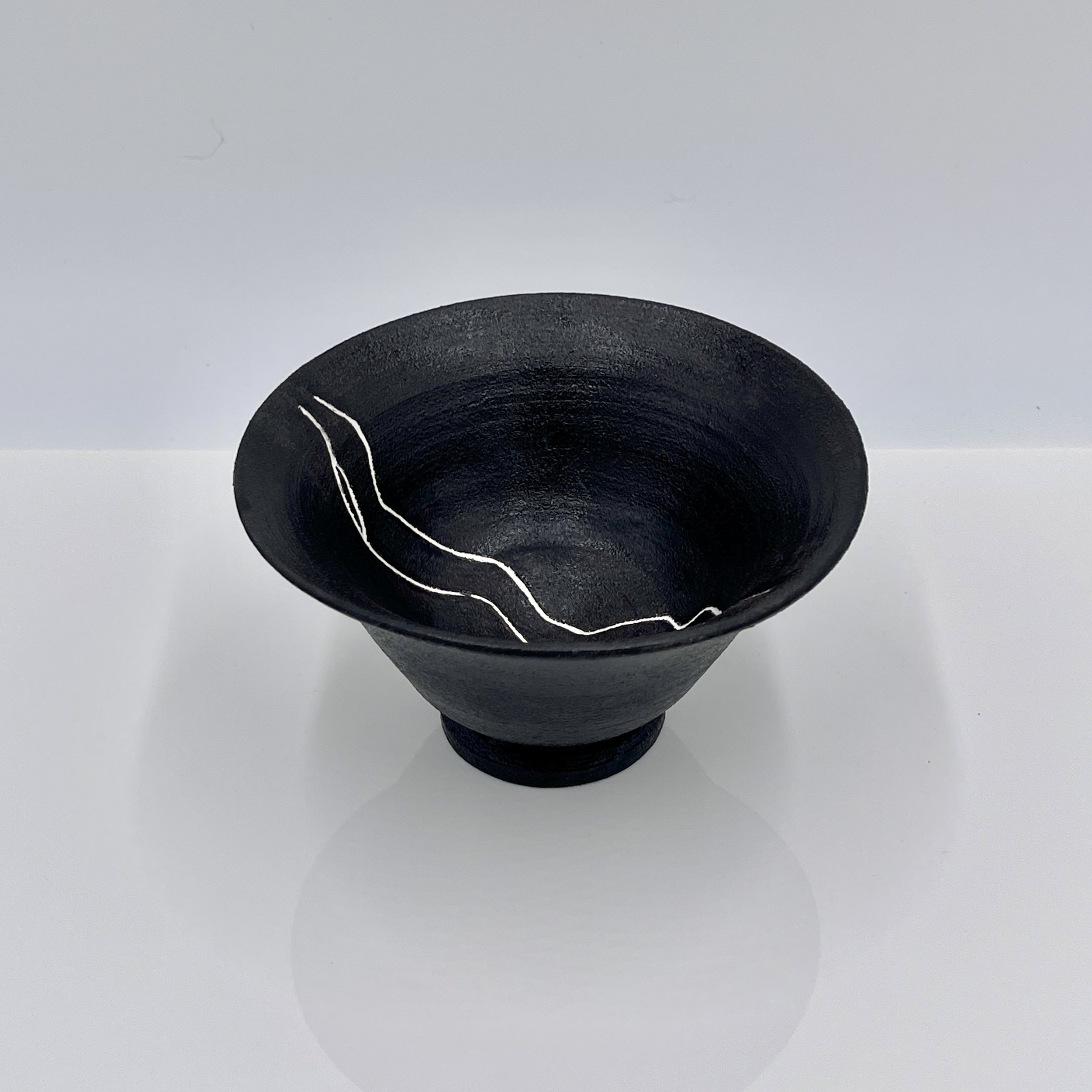 Image 3 of 5
Image 3 of 5

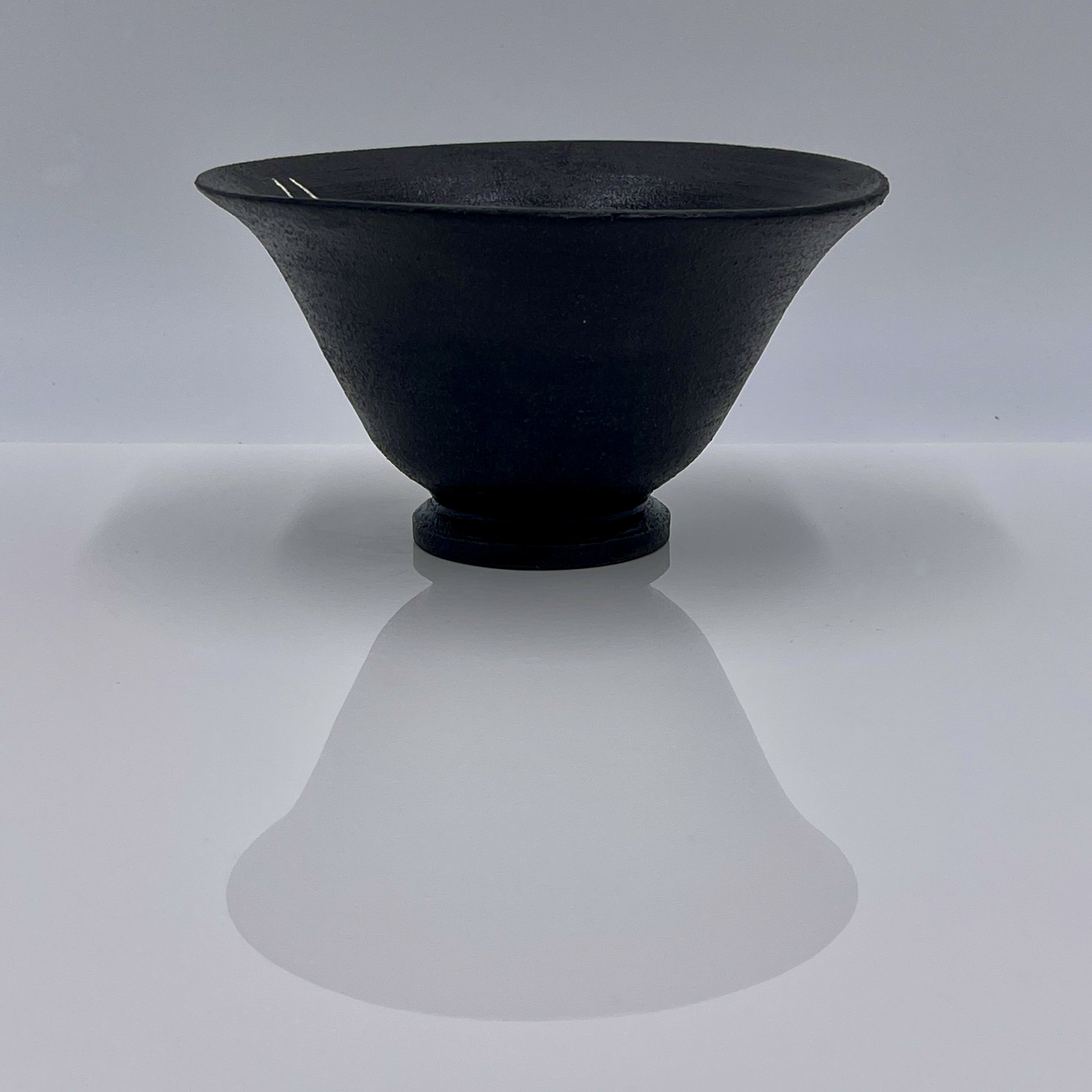 Image 4 of 5
Image 4 of 5

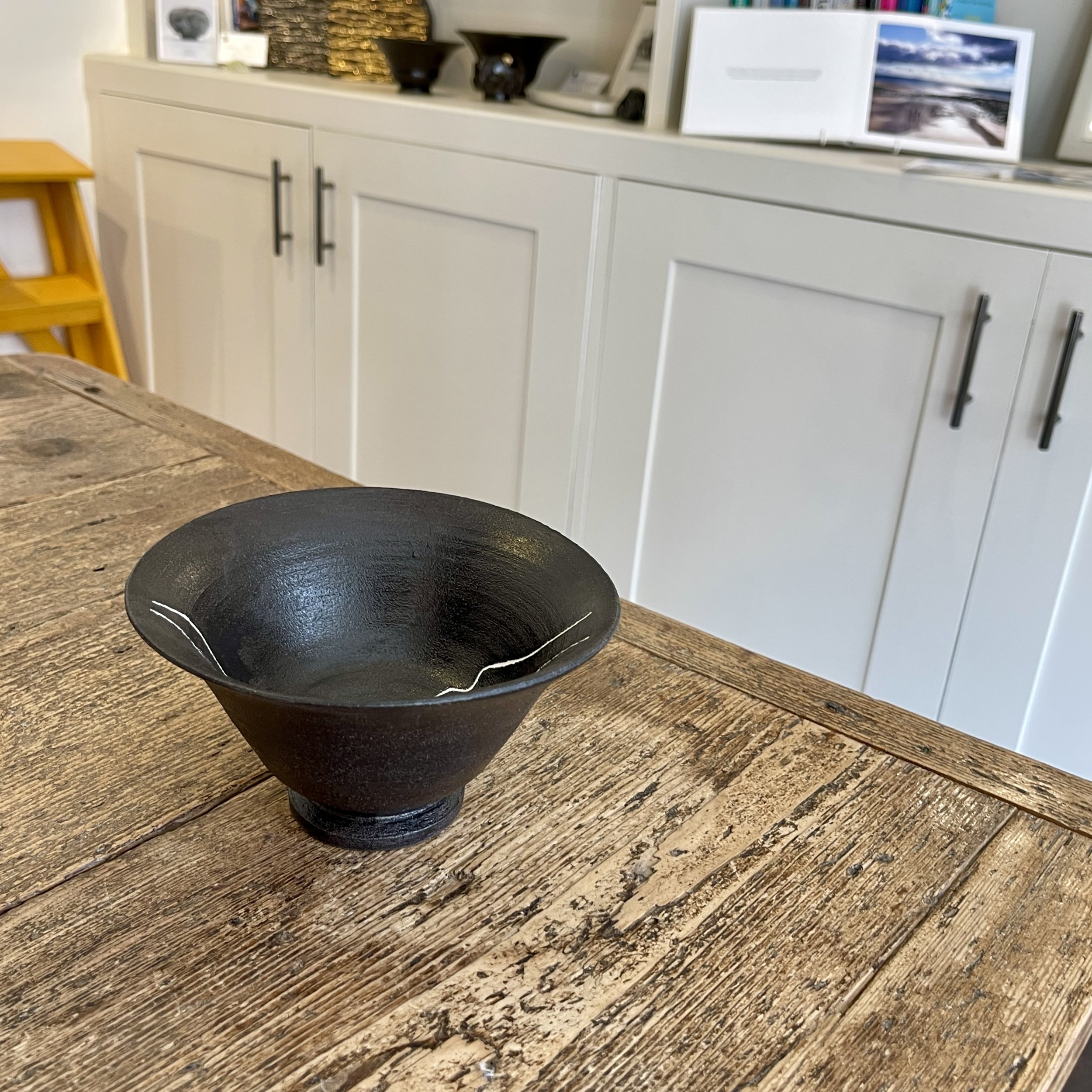 Image 5 of 5
Image 5 of 5






Bell Pit Mine Bowl
Dimensions: H: 8.5cms D: 15.5cms
Clay: Black clay, fine bone china
Technique: Hand thrown, inlay
Glaze: Black
Sculptural / Not Functional
This hand thrown Bell Pit Bowl has fine bone china inlaid into the bowl reflective of a seam in the coal.
Around Pembrokeshire you will find collieries in various states of dilapidation and preservation. These sites once produced some of the finest coal on the British Isles - it is reputed that Queen Victoria insisted that the coal for all royal residences came from Saundersfoot. Transported by small trains to Saundersfoot Harbour through the coastal tunnels and down ‘Railway Street’ (now called The Strand) past what was once a Chemist Shop, and now my gallery.
“A Study of Coal” is a body of work created in my studio that bears its roots in the industrial past of Pembrokeshire. Like all my work the theme is adapted to create abstract impressions resulting in striking sculptural pieces made from black clay. The full body of work includes Colliery Pots, Coal Pots, Peacock Coal Pots and Bell Pit Bowls.
Bell pit mines appeared before the industrialisation of mining when local people used to dig for coal and iron ore close to the surface of the ground. This resulted in fields being left with bell shaped impressions after people moved from one spot to another to dig for more coal and iron ore.
The piece is initialled on the base.
This piece is NOT FUNCTIONAL.
Dimensions: H: 8.5cms D: 15.5cms
Clay: Black clay, fine bone china
Technique: Hand thrown, inlay
Glaze: Black
Sculptural / Not Functional
This hand thrown Bell Pit Bowl has fine bone china inlaid into the bowl reflective of a seam in the coal.
Around Pembrokeshire you will find collieries in various states of dilapidation and preservation. These sites once produced some of the finest coal on the British Isles - it is reputed that Queen Victoria insisted that the coal for all royal residences came from Saundersfoot. Transported by small trains to Saundersfoot Harbour through the coastal tunnels and down ‘Railway Street’ (now called The Strand) past what was once a Chemist Shop, and now my gallery.
“A Study of Coal” is a body of work created in my studio that bears its roots in the industrial past of Pembrokeshire. Like all my work the theme is adapted to create abstract impressions resulting in striking sculptural pieces made from black clay. The full body of work includes Colliery Pots, Coal Pots, Peacock Coal Pots and Bell Pit Bowls.
Bell pit mines appeared before the industrialisation of mining when local people used to dig for coal and iron ore close to the surface of the ground. This resulted in fields being left with bell shaped impressions after people moved from one spot to another to dig for more coal and iron ore.
The piece is initialled on the base.
This piece is NOT FUNCTIONAL.
Dimensions: H: 8.5cms D: 15.5cms
Clay: Black clay, fine bone china
Technique: Hand thrown, inlay
Glaze: Black
Sculptural / Not Functional
This hand thrown Bell Pit Bowl has fine bone china inlaid into the bowl reflective of a seam in the coal.
Around Pembrokeshire you will find collieries in various states of dilapidation and preservation. These sites once produced some of the finest coal on the British Isles - it is reputed that Queen Victoria insisted that the coal for all royal residences came from Saundersfoot. Transported by small trains to Saundersfoot Harbour through the coastal tunnels and down ‘Railway Street’ (now called The Strand) past what was once a Chemist Shop, and now my gallery.
“A Study of Coal” is a body of work created in my studio that bears its roots in the industrial past of Pembrokeshire. Like all my work the theme is adapted to create abstract impressions resulting in striking sculptural pieces made from black clay. The full body of work includes Colliery Pots, Coal Pots, Peacock Coal Pots and Bell Pit Bowls.
Bell pit mines appeared before the industrialisation of mining when local people used to dig for coal and iron ore close to the surface of the ground. This resulted in fields being left with bell shaped impressions after people moved from one spot to another to dig for more coal and iron ore.
The piece is initialled on the base.
This piece is NOT FUNCTIONAL.
